This report serves to describe the mutational landscape and properties of a given individual set, as well as rank genes and genesets according to mutational significance. MutSig v2.0 and MutSigCV v0.9 merged result was used to generate the results found in this report.
-
Working with individual set: SKCM-TM
-
Number of patients in set: 228
The input for this pipeline is a set of individuals with the following files associated for each:
-
An annotated .maf file describing the mutations called for the respective individual, and their properties.
-
A .wig file that contains information about the coverage of the sample.
-
MAF used for this analysis:SKCM-TM.final_analysis_set.maf
-
Significantly mutated genes (q ≤ 0.1): 50
-
Mutations seen in COSMIC: 639
-
Significantly mutated genes in COSMIC territory: 42
-
Significantly mutated genesets: 2
-
Read 228 MAFs of type "Broad"
-
Total number of mutations in input MAFs: 199529
-
After removing 4 mutations outside chr1-24: 199525
-
After removing 795 blacklisted mutations: 198730
-
After removing 3688 noncoding mutations: 195042
-
Number of mutations before filtering: 195042
-
After removing 2459 mutations outside gene set: 192583
-
After removing 179 mutations outside category set: 192404
-
After removing 7 "impossible" mutations in
-
gene-patient-category bins of zero coverage: 189759
Table 1. Get Full Table Table representing breakdown of mutations by type.
| type | count |
|---|---|
| Frame_Shift_Del | 924 |
| Frame_Shift_Ins | 271 |
| In_Frame_Del | 339 |
| In_Frame_Ins | 45 |
| Missense_Mutation | 117473 |
| Nonsense_Mutation | 7172 |
| Nonstop_Mutation | 49 |
| Silent | 64243 |
| Splice_Site | 1835 |
| Translation_Start_Site | 53 |
| Total | 192404 |
Table 2. Get Full Table A breakdown of mutation rates per category discovered for this individual set.
| category | n | N | rate | rate_per_mb | relative_rate | exp_ns_s_ratio |
|---|---|---|---|---|---|---|
| (C/T)p*C->T | 88940 | 1812910184 | 0.000049 | 49 | 2.5 | 1.6 |
| (A/G)p*C->T | 9827 | 1521271502 | 6.5e-06 | 6.5 | 0.33 | 1.9 |
| A->G | 5054 | 3220290978 | 1.6e-06 | 1.6 | 0.08 | 2.3 |
| transver | 13699 | 6554472664 | 2.1e-06 | 2.1 | 0.11 | 5 |
| indel+null | 10478 | 6554472664 | 1.6e-06 | 1.6 | 0.082 | NaN |
| double_null | 159 | 6554472664 | 2.4e-08 | 0.024 | 0.0012 | NaN |
| Total | 128157 | 6554472664 | 2e-05 | 20 | 1 | 3.5 |
The x axis represents the samples. The y axis represents the exons, one row per exon, and they are sorted by average coverage across samples. For exons with exactly the same average coverage, they are sorted next by the %GC of the exon. (The secondary sort is especially useful for the zero-coverage exons at the bottom).
Figure 1.

Figure 2. Patients counts and rates file used to generate this plot: SKCM-TM.patients.counts_and_rates.txt
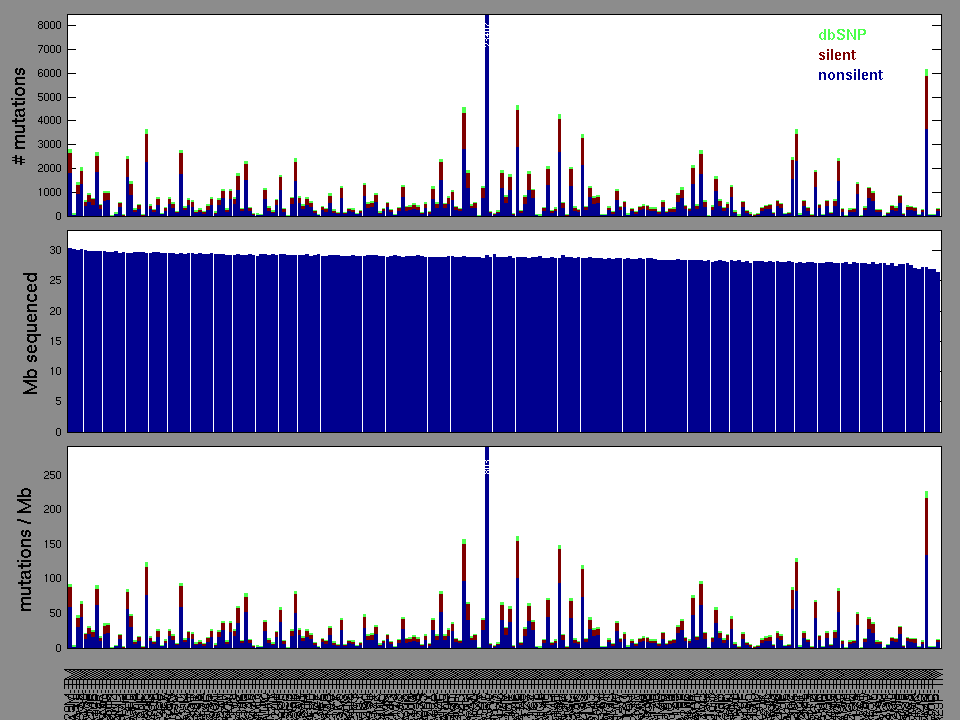
Figure 3. Needs description.
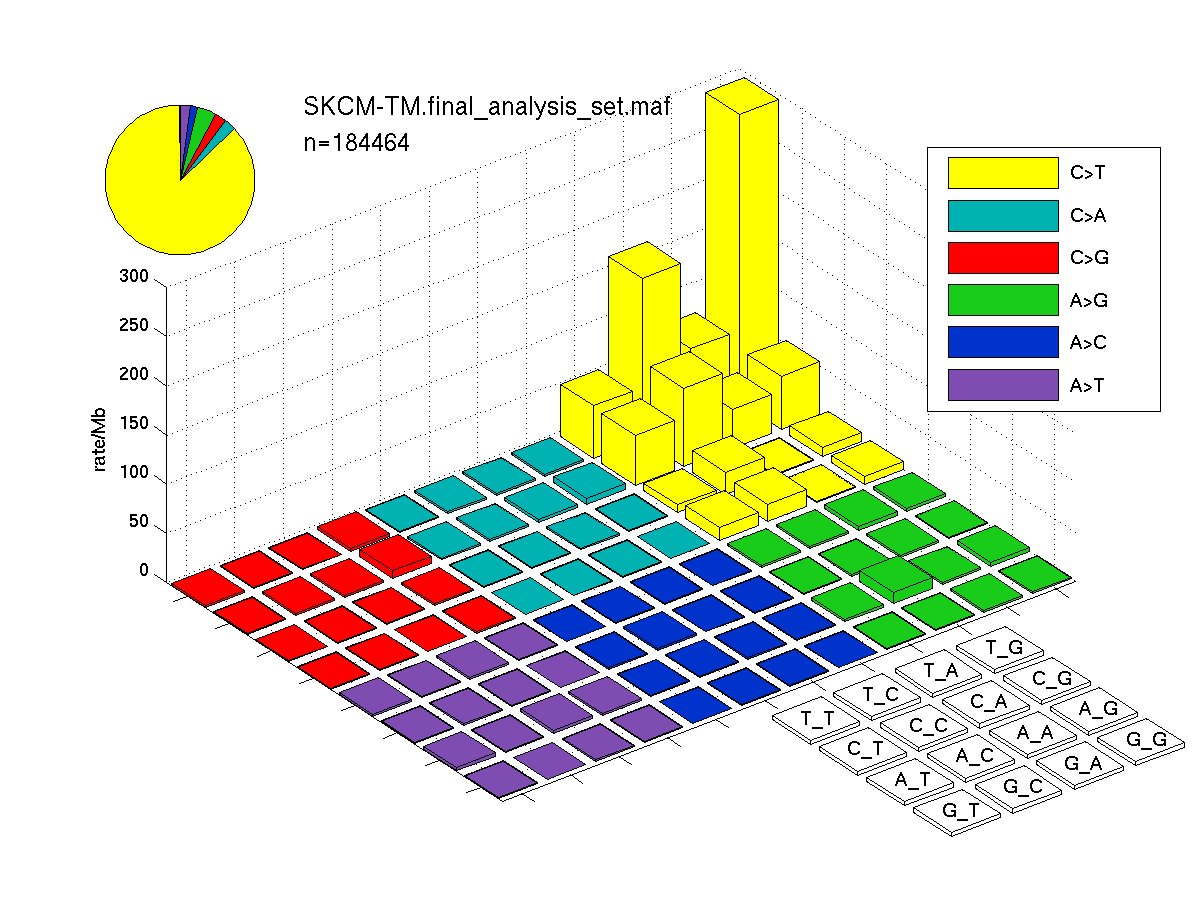
Figure 4. Needs description.
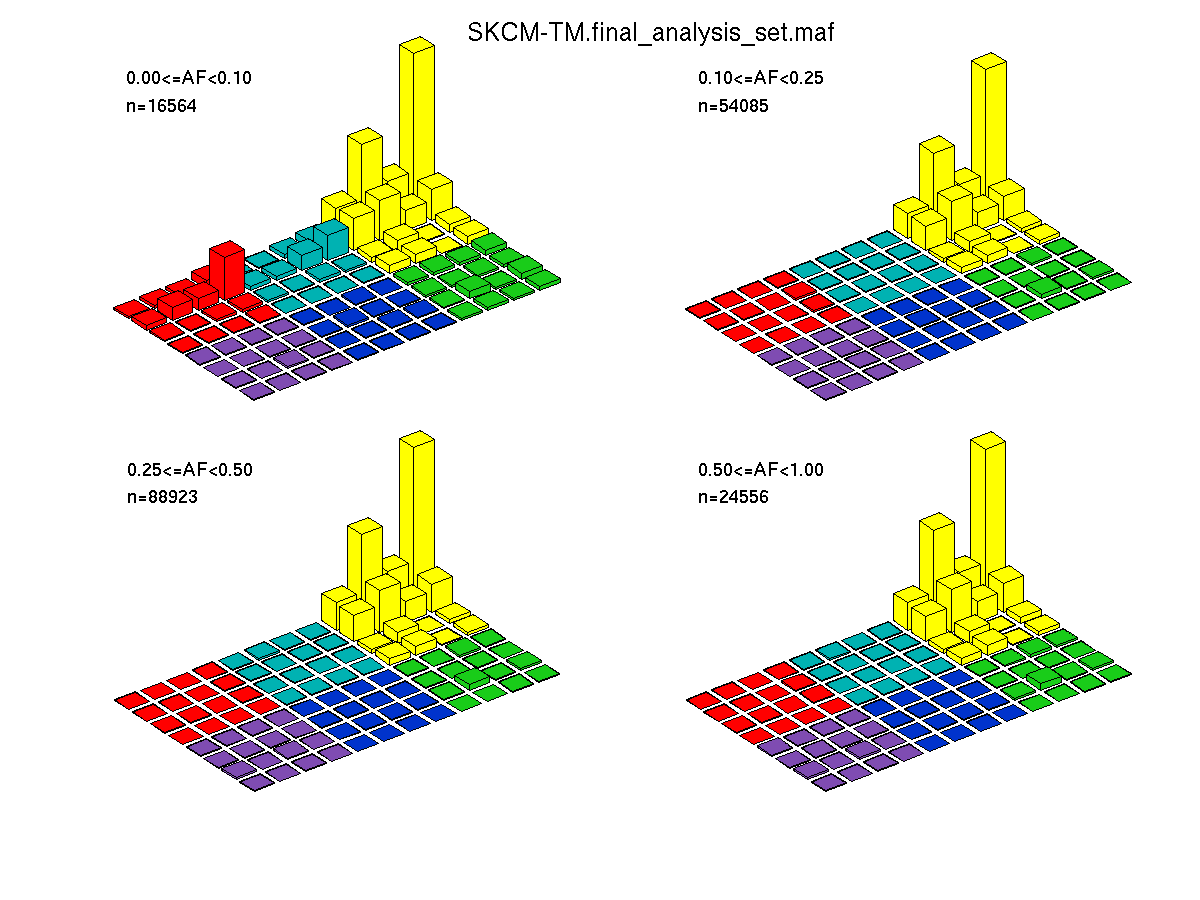
Figure 5. Get High-res Image The matrix in the center of the figure represents individual mutations in patient samples, color-coded by type of mutation, for the significantly mutated genes. The rate of synonymous and non-synonymous mutations is displayed at the top of the matrix. The barplot on the left of the matrix shows the number of mutations in each gene. The percentages represent the fraction of tumors with at least one mutation in the specified gene. The barplot to the right of the matrix displays the q-values for the most significantly mutated genes. The purple boxplots below the matrix (only displayed if required columns are present in the provided MAF) represent the distributions of allelic fractions observed in each sample. The plot at the bottom represents the base substitution distribution of individual samples, using the same categories that were used to calculate significance.

Column Descriptions:
-
N = number of sequenced bases in this gene across the individual set
-
n = number of (nonsilent) mutations in this gene across the individual set
-
npat = number of patients (individuals) with at least one nonsilent mutation
-
nsite = number of unique sites having a non-silent mutation
-
nsil = number of silent mutations in this gene across the individual set
-
n1 = number of nonsilent mutations of type: (C/T)p*C->T
-
n2 = number of nonsilent mutations of type: (A/G)p*C->T
-
n3 = number of nonsilent mutations of type: A->G
-
n4 = number of nonsilent mutations of type: transver
-
n5 = number of nonsilent mutations of type: indel+null
-
n6 = number of nonsilent mutations of type: double_null
-
p_cons = p-value for enrichment of mutations at evolutionarily most-conserved sites in gene
-
p_joint = p-value for clustering + conservation
-
p = p-value (overall)
-
q = q-value, False Discovery Rate (Benjamini-Hochberg procedure)
Table 3. Get Full Table A Ranked List of Significantly Mutated Genes. Number of significant genes found: 50. Number of genes displayed: 35. Click on a gene name to display its stick figure depicting the distribution of mutations and mutation types across the chosen gene (this feature may not be available for all significant genes).
| rank | gene | description | N | n | npat | nsite | nsil | n1 | n2 | n3 | n4 | n5 | n6 | p_cons | p_joint | p_cv | p | q |
|---|---|---|---|---|---|---|---|---|---|---|---|---|---|---|---|---|---|---|
| 1 | C15orf23 | chromosome 15 open reading frame 23 | 232193 | 15 | 14 | 7 | 4 | 15 | 0 | 0 | 0 | 0 | 0 | 1 | 0 | 0.0059 | 0 | 0 |
| 2 | CDKN2A | cyclin-dependent kinase inhibitor 2A (melanoma, p16, inhibits CDK4) | 209713 | 33 | 33 | 15 | 1 | 10 | 0 | 0 | 1 | 22 | 0 | 0 | 0 | 8.3e-15 | 0 | 0 |
| 3 | NRAS | neuroblastoma RAS viral (v-ras) oncogene homolog | 133556 | 67 | 67 | 9 | 1 | 2 | 1 | 23 | 41 | 0 | 0 | 1.2e-06 | 0 | 0 | 0 | 0 |
| 4 | BRAF | v-raf murine sarcoma viral oncogene homolog B1 | 505506 | 123 | 117 | 17 | 3 | 13 | 1 | 5 | 103 | 1 | 0 | 0 | 0 | 1e-15 | 0 | 0 |
| 5 | OXA1L | oxidase (cytochrome c) assembly 1-like | 347630 | 7 | 7 | 3 | 3 | 7 | 0 | 0 | 0 | 0 | 0 | 1 | 0 | 0.56 | 0 | 0 |
| 6 | TP53 | tumor protein p53 | 276551 | 39 | 35 | 33 | 1 | 17 | 0 | 4 | 4 | 14 | 0 | 0.028 | 3.6e-06 | 1.4e-13 | 0 | 0 |
| 7 | STK19 | serine/threonine kinase 19 | 246849 | 13 | 11 | 8 | 0 | 11 | 1 | 0 | 1 | 0 | 0 | 0.96 | 0 | 1 | 0 | 0 |
| 8 | PTEN | phosphatase and tensin homolog (mutated in multiple advanced cancers 1) | 257977 | 18 | 18 | 16 | 0 | 1 | 0 | 3 | 3 | 11 | 0 | 0.71 | 0.12 | 7.1e-15 | 3.2e-14 | 7.1e-11 |
| 9 | DSG1 | desmoglein 1 | 725270 | 56 | 39 | 49 | 10 | 45 | 2 | 0 | 3 | 6 | 0 | 0.65 | 0.11 | 4.6e-09 | 1.1e-08 | 0.000022 |
| 10 | PPP6C | protein phosphatase 6, catalytic subunit | 228898 | 19 | 18 | 14 | 2 | 13 | 0 | 0 | 2 | 4 | 0 | 0.32 | 0.12 | 7e-09 | 1.8e-08 | 0.000032 |
| 11 | RAC1 | ras-related C3 botulinum toxin substrate 1 (rho family, small GTP binding protein Rac1) | 140096 | 17 | 17 | 8 | 1 | 15 | 0 | 0 | 2 | 0 | 0 | 0.17 | 2e-05 | 0.0016 | 5.9e-07 | 0.00096 |
| 12 | AOAH | acyloxyacyl hydrolase (neutrophil) | 439824 | 22 | 21 | 20 | 9 | 12 | 0 | 0 | 5 | 5 | 0 | 0.18 | 0.014 | 3.1e-06 | 8e-07 | 0.0012 |
| 13 | IDH1 | isocitrate dehydrogenase 1 (NADP+), soluble | 287241 | 12 | 12 | 4 | 1 | 10 | 0 | 0 | 2 | 0 | 0 | 0.97 | 3.4e-06 | 0.029 | 1.7e-06 | 0.0024 |
| 14 | OR51S1 | olfactory receptor, family 51, subfamily S, member 1 | 221261 | 30 | 27 | 21 | 8 | 23 | 3 | 0 | 2 | 2 | 0 | 0.99 | 0.014 | 8e-06 | 1.9e-06 | 0.0025 |
| 15 | IL32 | interleukin 32 | 113333 | 9 | 9 | 6 | 3 | 2 | 1 | 0 | 1 | 5 | 0 | 0.9 | 0.022 | 6.7e-06 | 2.5e-06 | 0.003 |
| 16 | PPIAL4G | peptidylprolyl isomerase A (cyclophilin A)-like 4G | 113772 | 12 | 12 | 9 | 7 | 7 | 0 | 0 | 3 | 2 | 0 | 0.99 | 0.15 | 1.6e-06 | 4e-06 | 0.0044 |
| 17 | UGT2B15 | UDP glucuronosyltransferase 2 family, polypeptide B15 | 692010 | 25 | 21 | 24 | 13 | 14 | 2 | 1 | 2 | 6 | 0 | 0.78 | 5.4e-06 | 0.067 | 5.7e-06 | 0.0061 |
| 18 | TTN | titin | 23403499 | 1045 | 176 | 962 | 369 | 807 | 69 | 33 | 94 | 33 | 9 | 1 | 1.8e-06 | 0.26 | 7.3e-06 | 0.0073 |
| 19 | THEMIS | thymocyte selection associated | 425802 | 33 | 27 | 25 | 14 | 27 | 1 | 1 | 2 | 2 | 0 | 0.64 | 0.00055 | 0.0011 | 9.2e-06 | 0.0087 |
| 20 | LRTM1 | leucine-rich repeats and transmembrane domains 1 | 237820 | 28 | 23 | 27 | 14 | 17 | 4 | 2 | 3 | 2 | 0 | 0.98 | 0.1 | 0.000012 | 0.000018 | 0.016 |
| 21 | TCEB3C | transcription elongation factor B polypeptide 3C (elongin A3) | 230241 | 31 | 26 | 23 | 9 | 23 | 2 | 0 | 2 | 4 | 0 | 1 | 0.1 | 0.000014 | 0.000021 | 0.018 |
| 22 | ELF5 | E74-like factor 5 (ets domain transcription factor) | 185836 | 6 | 6 | 6 | 2 | 4 | 0 | 0 | 0 | 2 | 0 | 0.12 | 0.000046 | 0.051 | 0.000032 | 0.026 |
| 23 | GPR141 | G protein-coupled receptor 141 | 210024 | 14 | 14 | 10 | 5 | 11 | 0 | 1 | 1 | 1 | 0 | 0.12 | 0.14 | 0.000021 | 4e-05 | 0.031 |
| 24 | NMNAT3 | nicotinamide nucleotide adenylyltransferase 3 | 148123 | 8 | 8 | 8 | 8 | 3 | 1 | 0 | 1 | 3 | 0 | 0.0011 | 0.0012 | 0.0027 | 0.000046 | 0.035 |
| 25 | EIF2B1 | eukaryotic translation initiation factor 2B, subunit 1 alpha, 26kDa | 216804 | 9 | 9 | 3 | 3 | 1 | 0 | 0 | 1 | 7 | 0 | 0.97 | 1 | 4.2e-06 | 0.000056 | 0.041 |
| 26 | CHGB | chromogranin B (secretogranin 1) | 426128 | 28 | 25 | 28 | 9 | 23 | 1 | 0 | 0 | 4 | 0 | 0.077 | 0.022 | 0.00021 | 0.000063 | 0.044 |
| 27 | COPG2 | coatomer protein complex, subunit gamma 2 | 280429 | 11 | 9 | 8 | 1 | 1 | 1 | 0 | 4 | 5 | 0 | 0.01 | 0.0029 | 0.0017 | 0.000066 | 0.044 |
| 28 | RAPGEF5 | Rap guanine nucleotide exchange factor (GEF) 5 | 370075 | 13 | 12 | 11 | 3 | 10 | 1 | 0 | 0 | 2 | 0 | 0.74 | 0.000036 | 0.16 | 0.000076 | 0.049 |
| 29 | MS4A2 | membrane-spanning 4-domains, subfamily A, member 2 (Fc fragment of IgE, high affinity I, receptor for; beta polypeptide) | 180888 | 10 | 10 | 10 | 1 | 8 | 0 | 0 | 0 | 2 | 0 | 0.87 | 0.59 | 0.000012 | 0.000089 | 0.055 |
| 30 | MPP7 | membrane protein, palmitoylated 7 (MAGUK p55 subfamily member 7) | 395617 | 31 | 25 | 27 | 5 | 25 | 1 | 0 | 2 | 3 | 0 | 0.61 | 0.12 | 0.000057 | 0.000091 | 0.055 |
| 31 | C1QTNF9 | C1q and tumor necrosis factor related protein 9 | 188774 | 14 | 14 | 12 | 3 | 10 | 1 | 0 | 2 | 1 | 0 | 0.96 | 0.12 | 0.000061 | 0.000091 | 0.055 |
| 32 | DNAH7 | dynein, axonemal, heavy chain 7 | 2773342 | 164 | 83 | 150 | 60 | 122 | 11 | 6 | 3 | 19 | 3 | 0.99 | 0.35 | 2e-05 | 0.000091 | 0.055 |
| 33 | FAM58A | family with sequence similarity 58, member A | 133422 | 5 | 5 | 4 | 0 | 0 | 0 | 0 | 0 | 5 | 0 | 0.085 | 0.02 | 0.00039 | 0.000098 | 0.055 |
| 34 | LCE1B | late cornified envelope 1B | 82168 | 12 | 12 | 12 | 0 | 8 | 0 | 0 | 2 | 2 | 0 | 0.68 | 1 | 8.2e-06 | 0.0001 | 0.055 |
| 35 | SCN5A | sodium channel, voltage-gated, type V, alpha subunit | 1272711 | 83 | 57 | 80 | 43 | 59 | 8 | 4 | 4 | 8 | 0 | 0.89 | 0.42 | 0.000022 | 0.00011 | 0.059 |
Figure S1. This figure depicts the distribution of mutations and mutation types across the C15orf23 significant gene.

Figure S2. This figure depicts the distribution of mutations and mutation types across the CDKN2A significant gene.
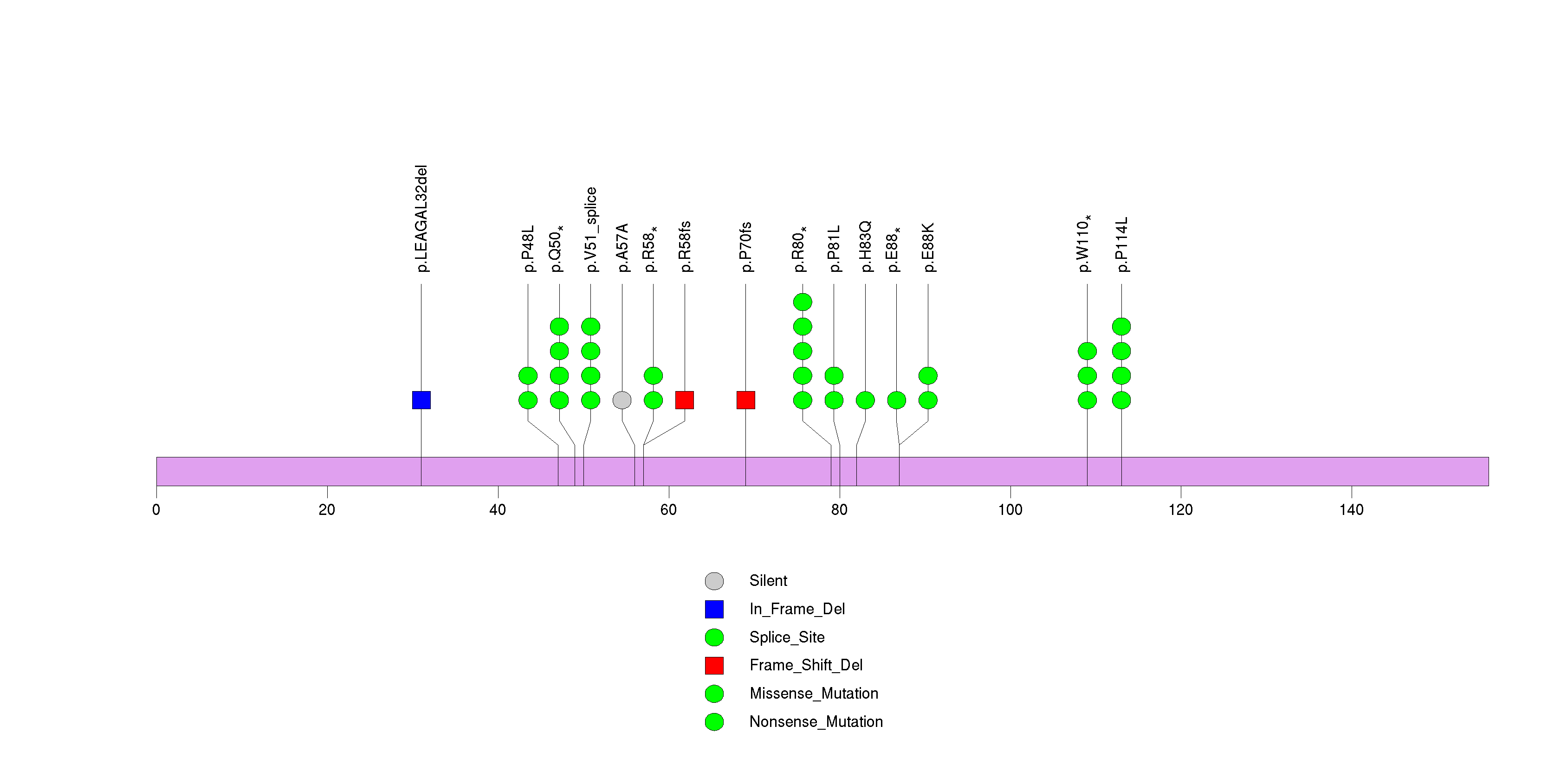
Figure S3. This figure depicts the distribution of mutations and mutation types across the NRAS significant gene.
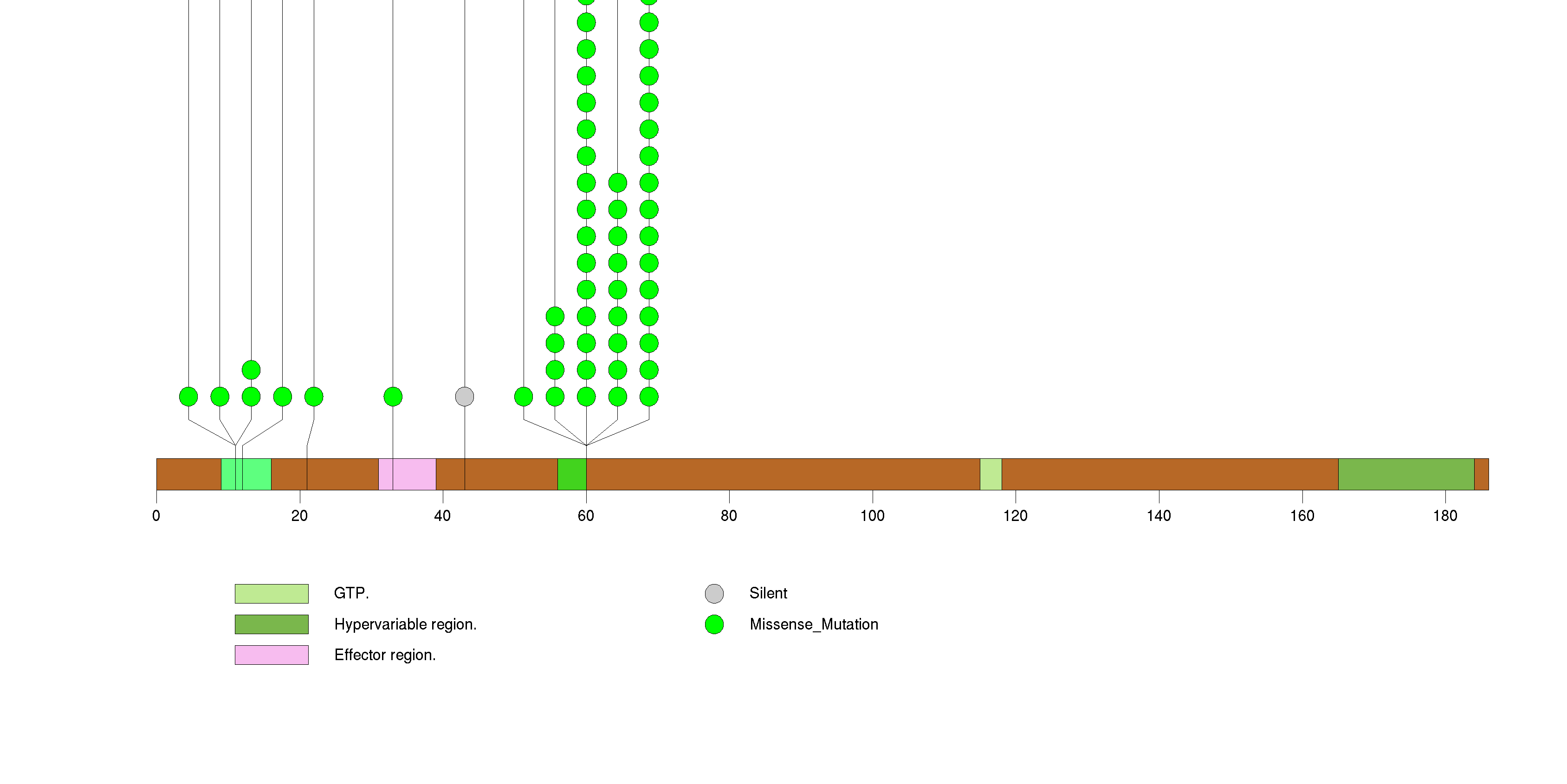
Figure S4. This figure depicts the distribution of mutations and mutation types across the BRAF significant gene.
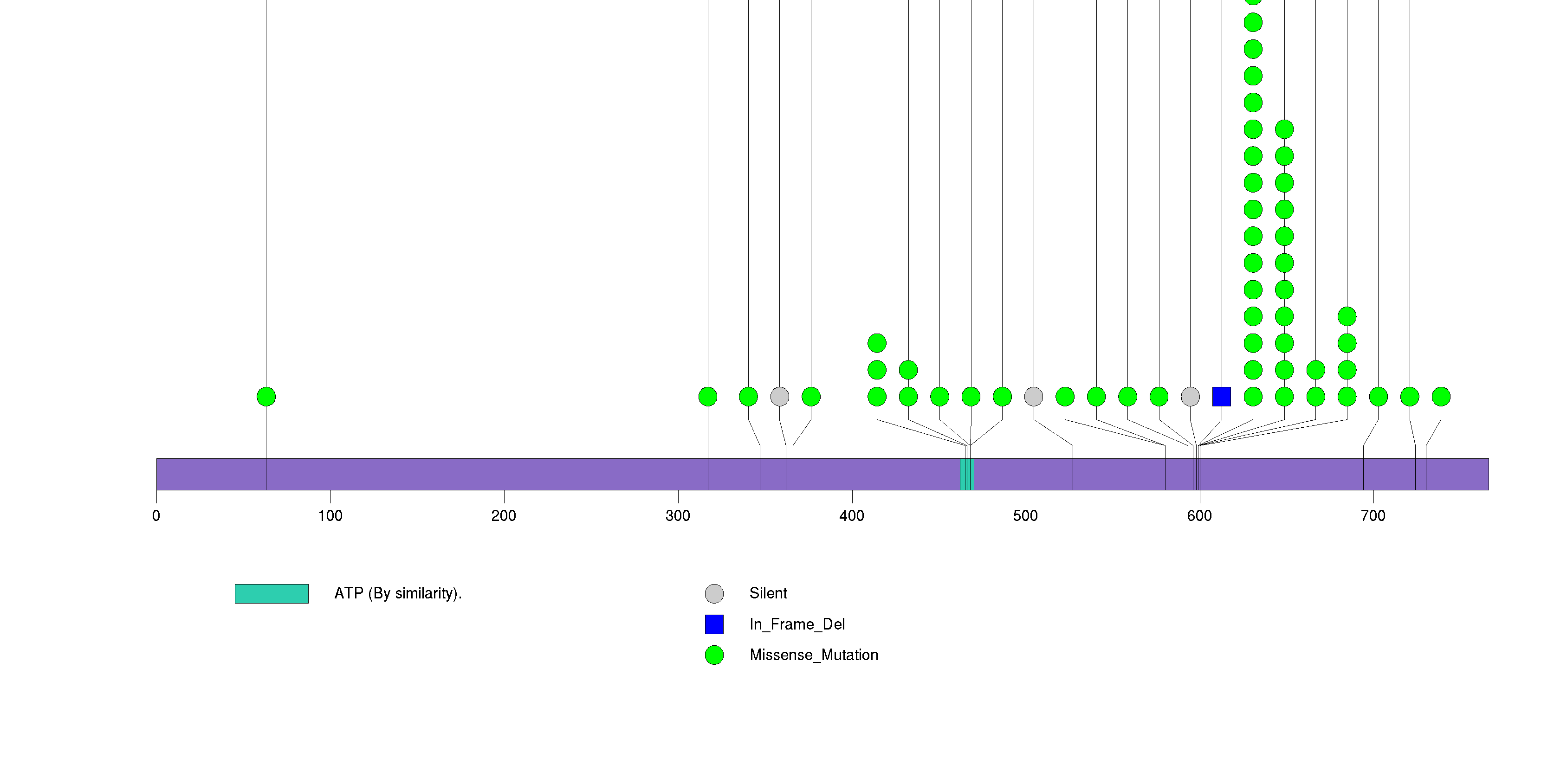
Figure S5. This figure depicts the distribution of mutations and mutation types across the OXA1L significant gene.

Figure S6. This figure depicts the distribution of mutations and mutation types across the TP53 significant gene.

Figure S7. This figure depicts the distribution of mutations and mutation types across the STK19 significant gene.
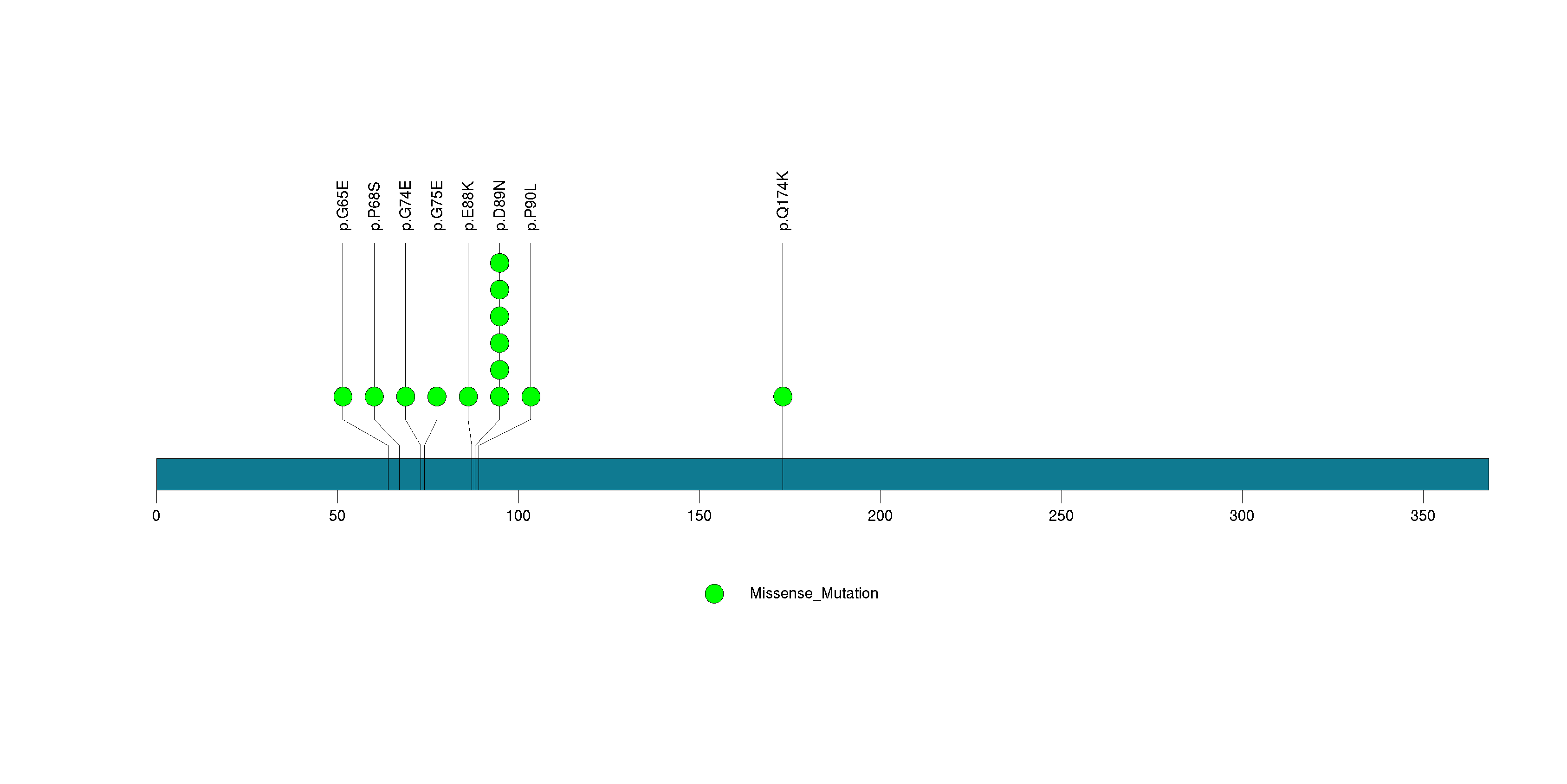
Figure S8. This figure depicts the distribution of mutations and mutation types across the PTEN significant gene.

Figure S9. This figure depicts the distribution of mutations and mutation types across the DSG1 significant gene.
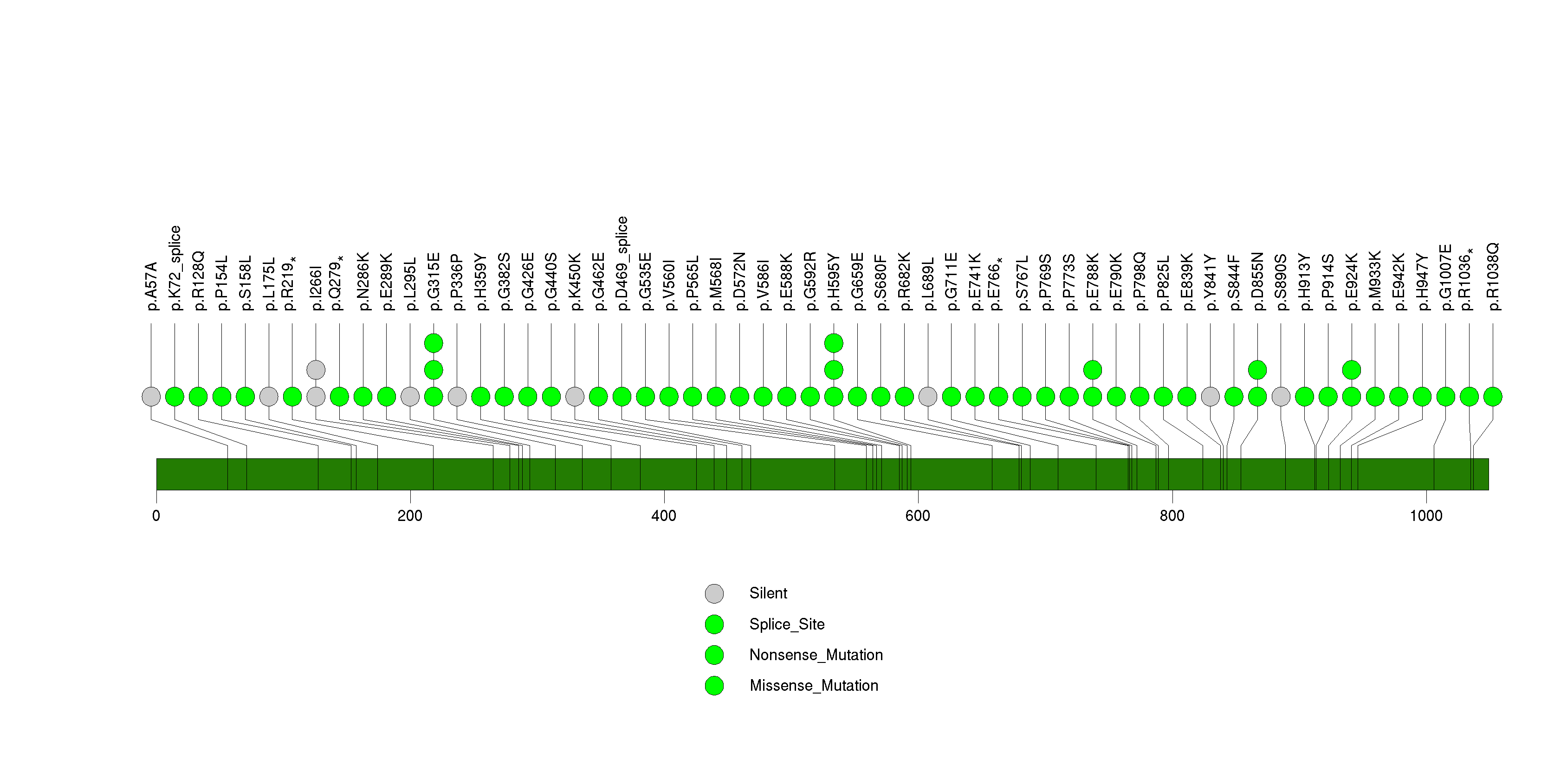
Figure S10. This figure depicts the distribution of mutations and mutation types across the PPP6C significant gene.
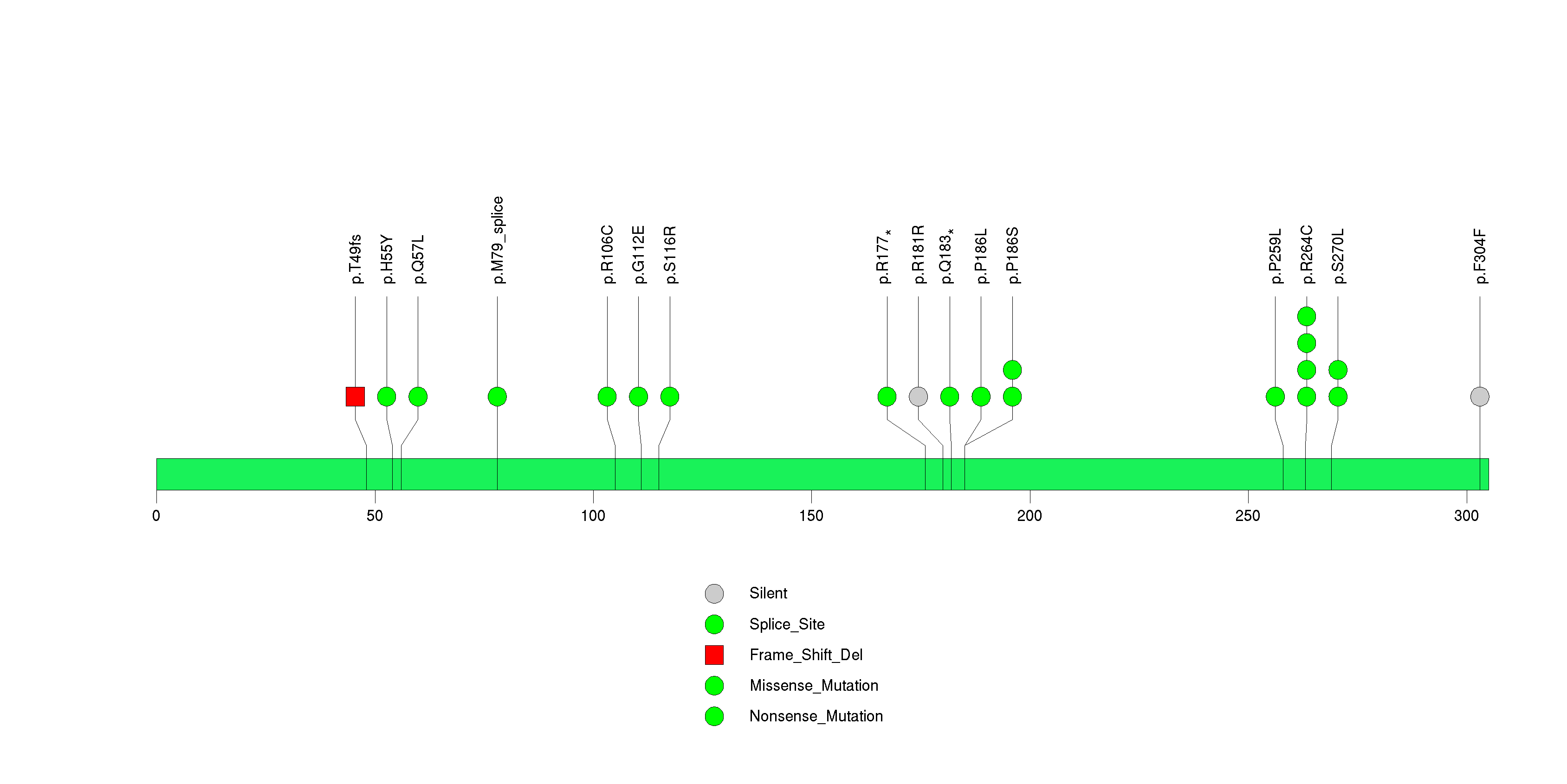
Figure S11. This figure depicts the distribution of mutations and mutation types across the RAC1 significant gene.
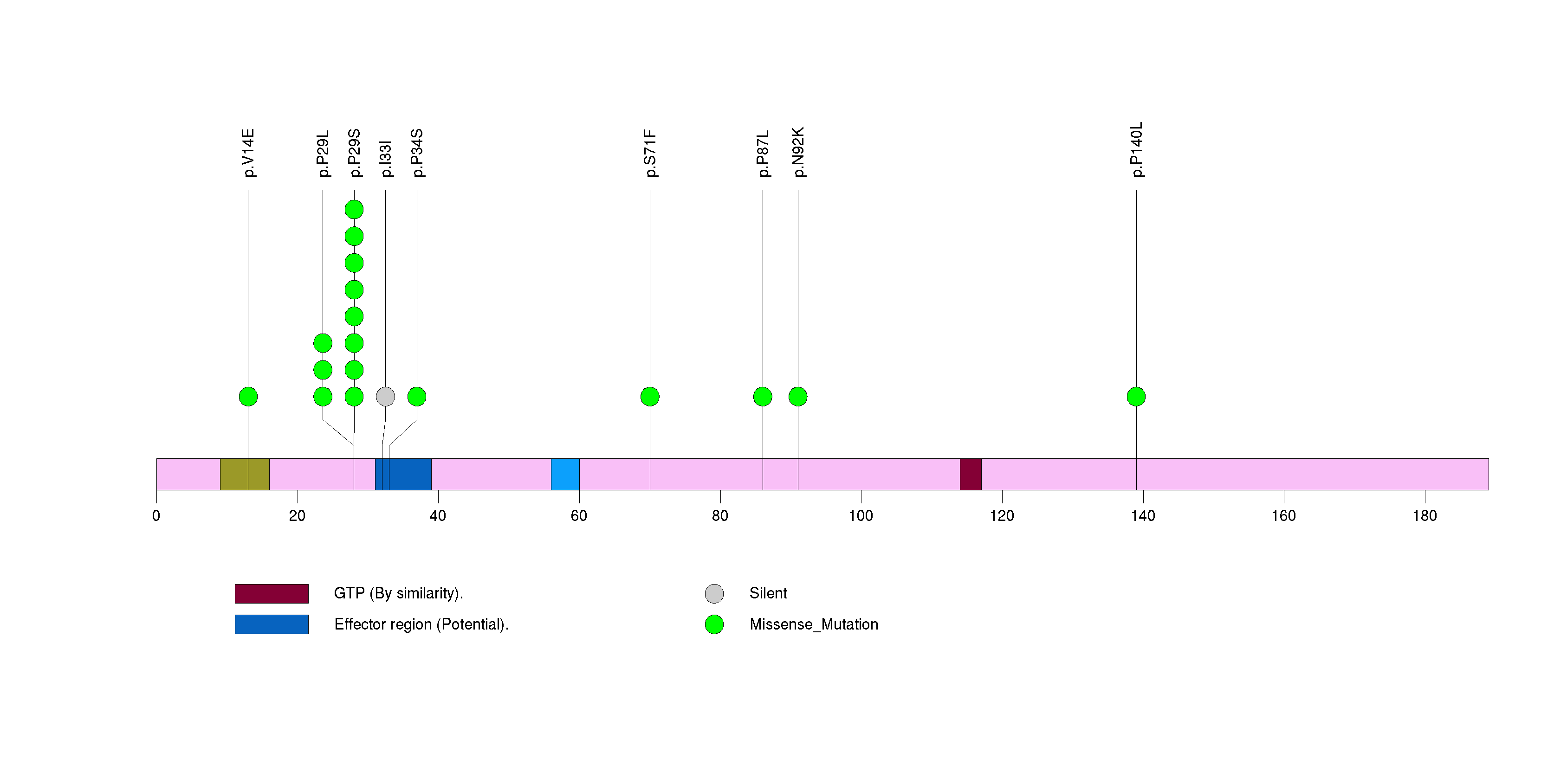
Figure S12. This figure depicts the distribution of mutations and mutation types across the IDH1 significant gene.
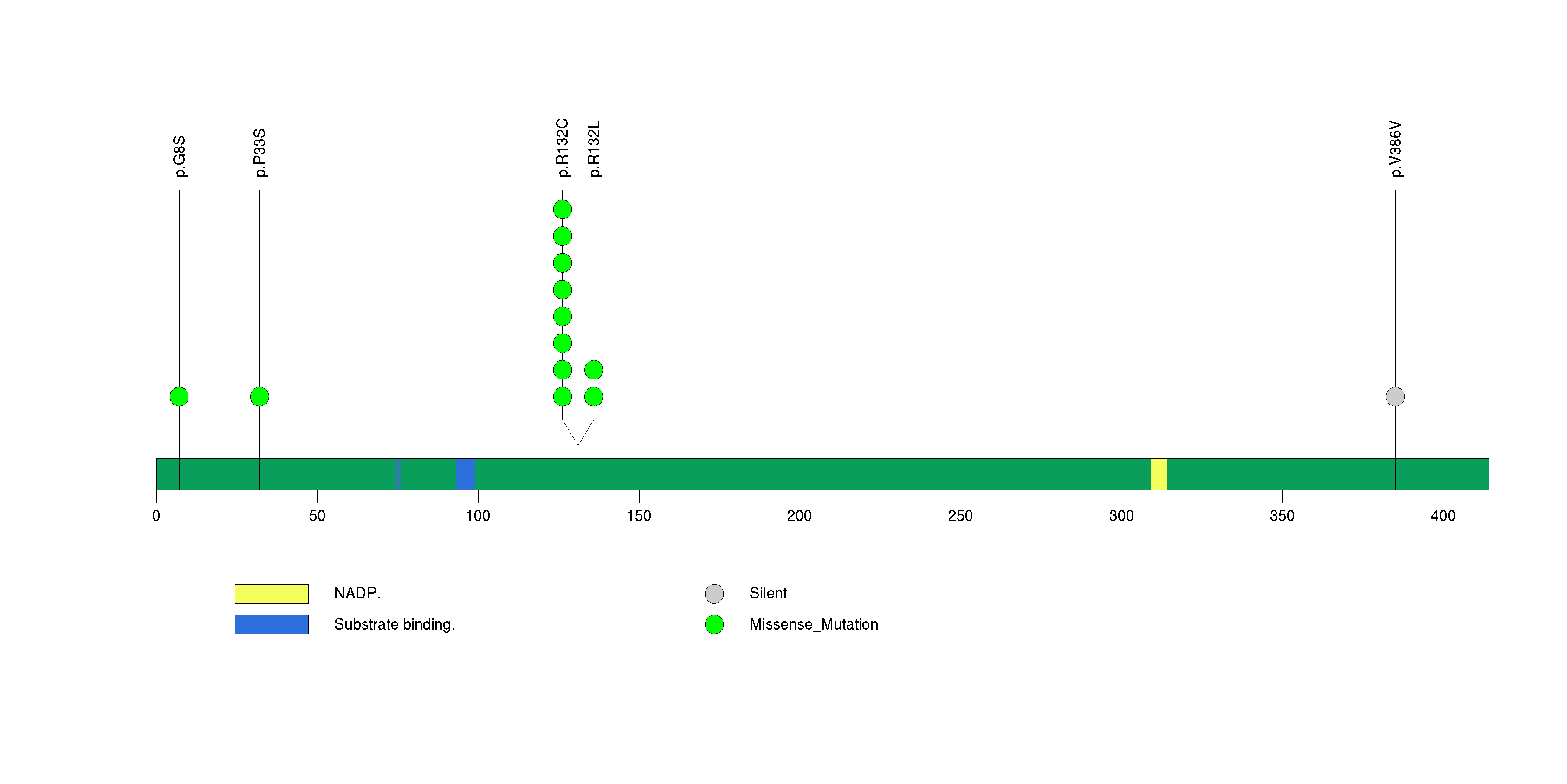
Figure S13. This figure depicts the distribution of mutations and mutation types across the OR51S1 significant gene.
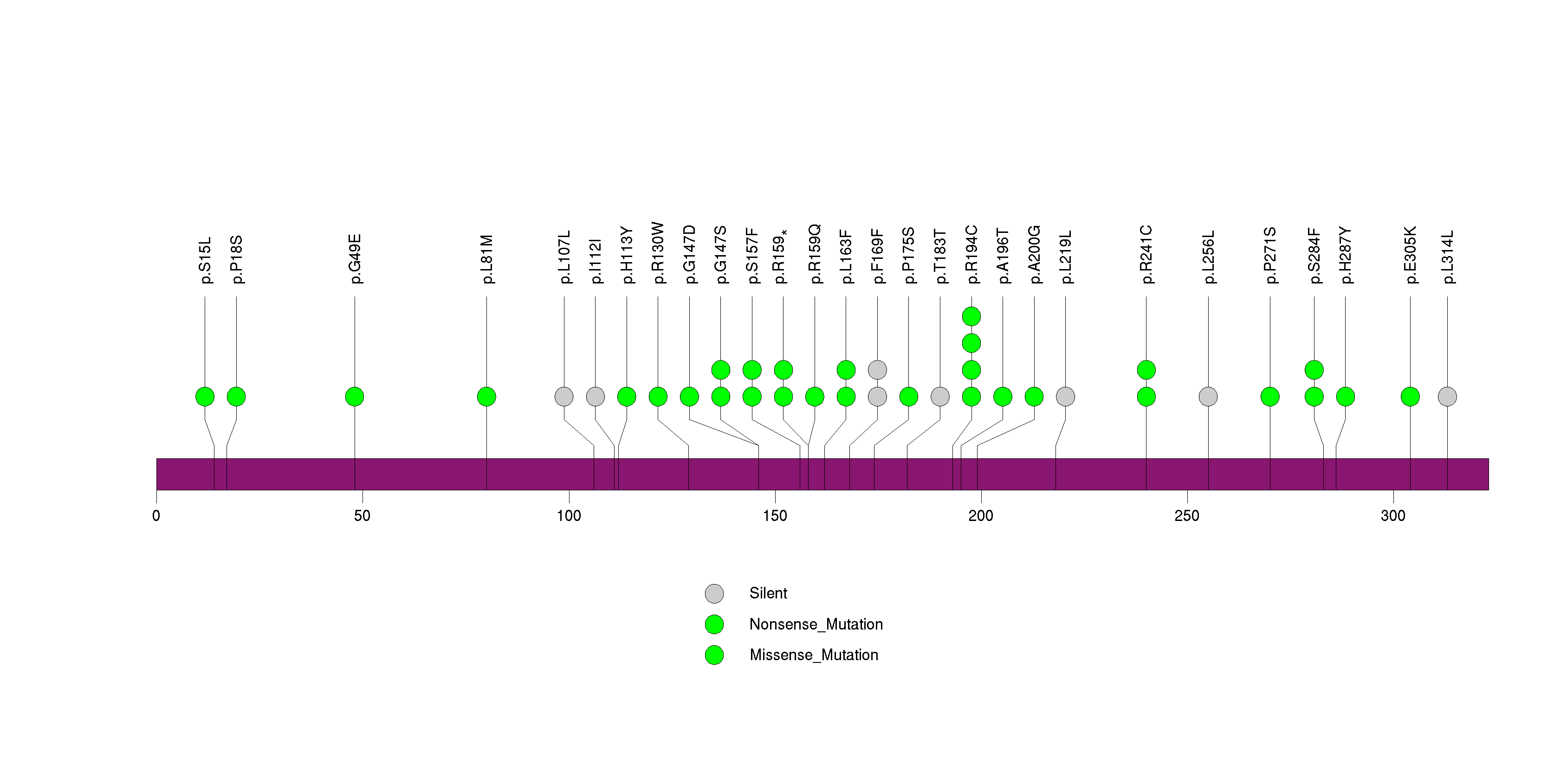
Figure S14. This figure depicts the distribution of mutations and mutation types across the IL32 significant gene.
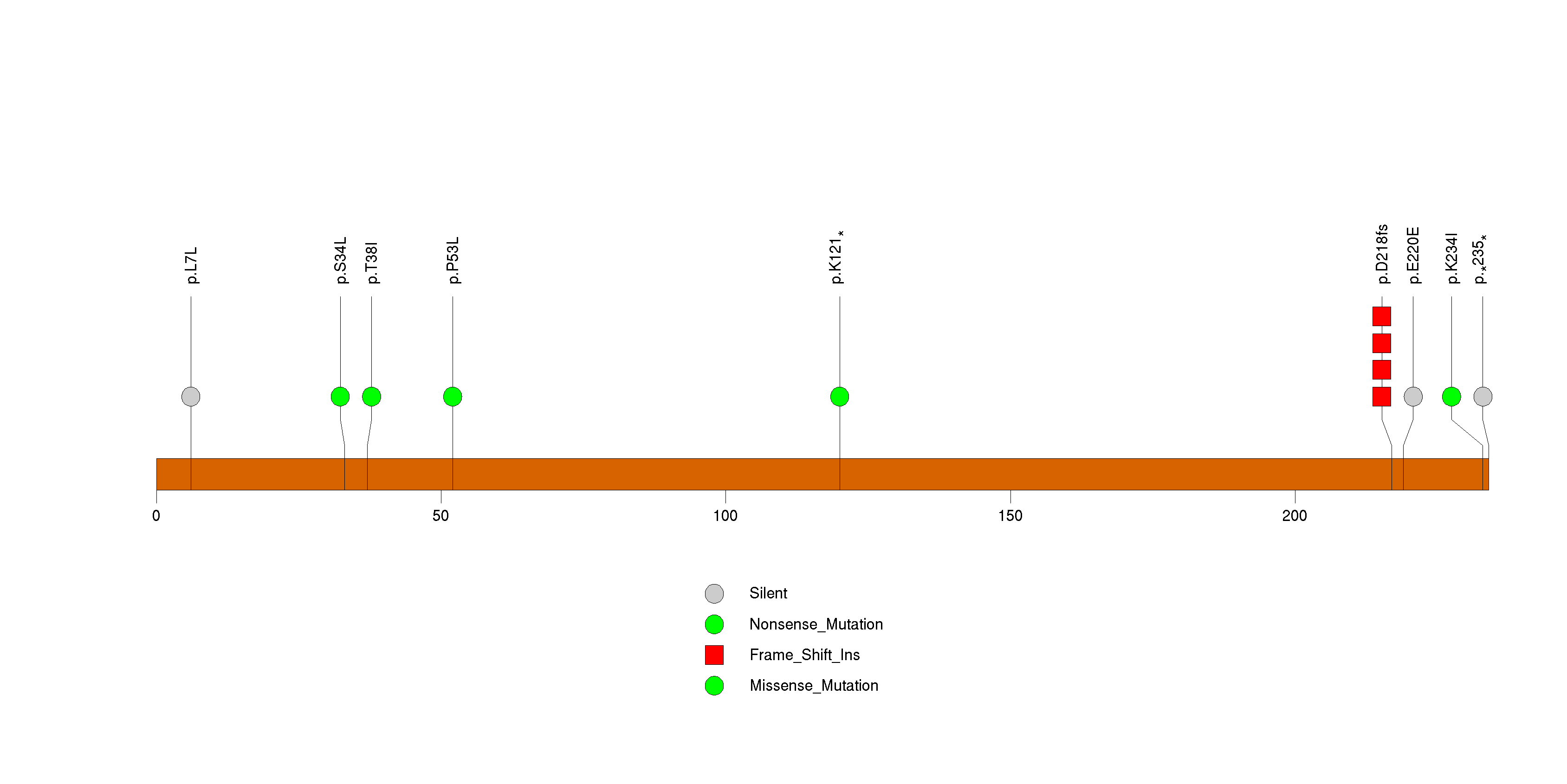
Figure S15. This figure depicts the distribution of mutations and mutation types across the PPIAL4G significant gene.
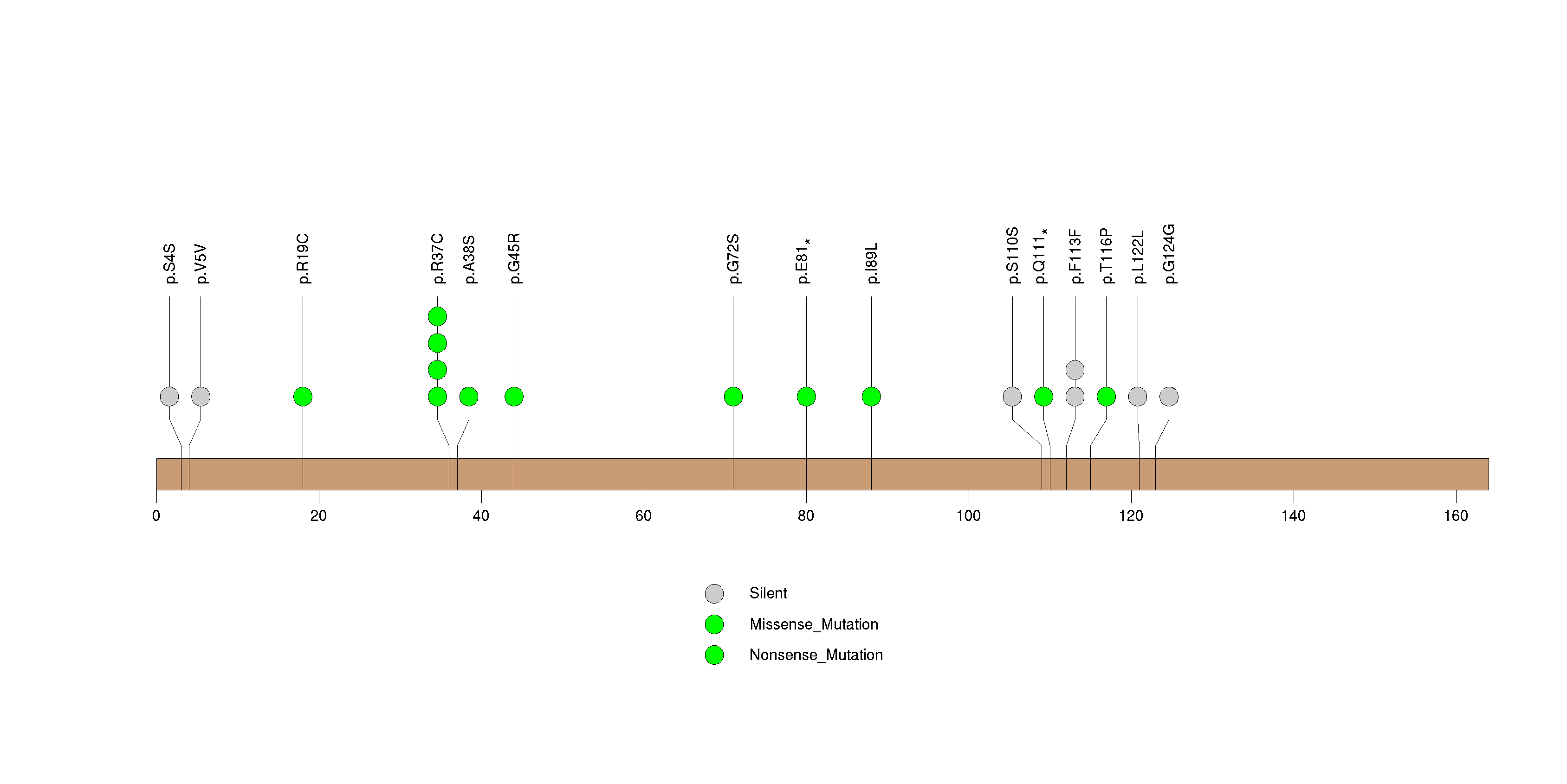
Figure S16. This figure depicts the distribution of mutations and mutation types across the UGT2B15 significant gene.
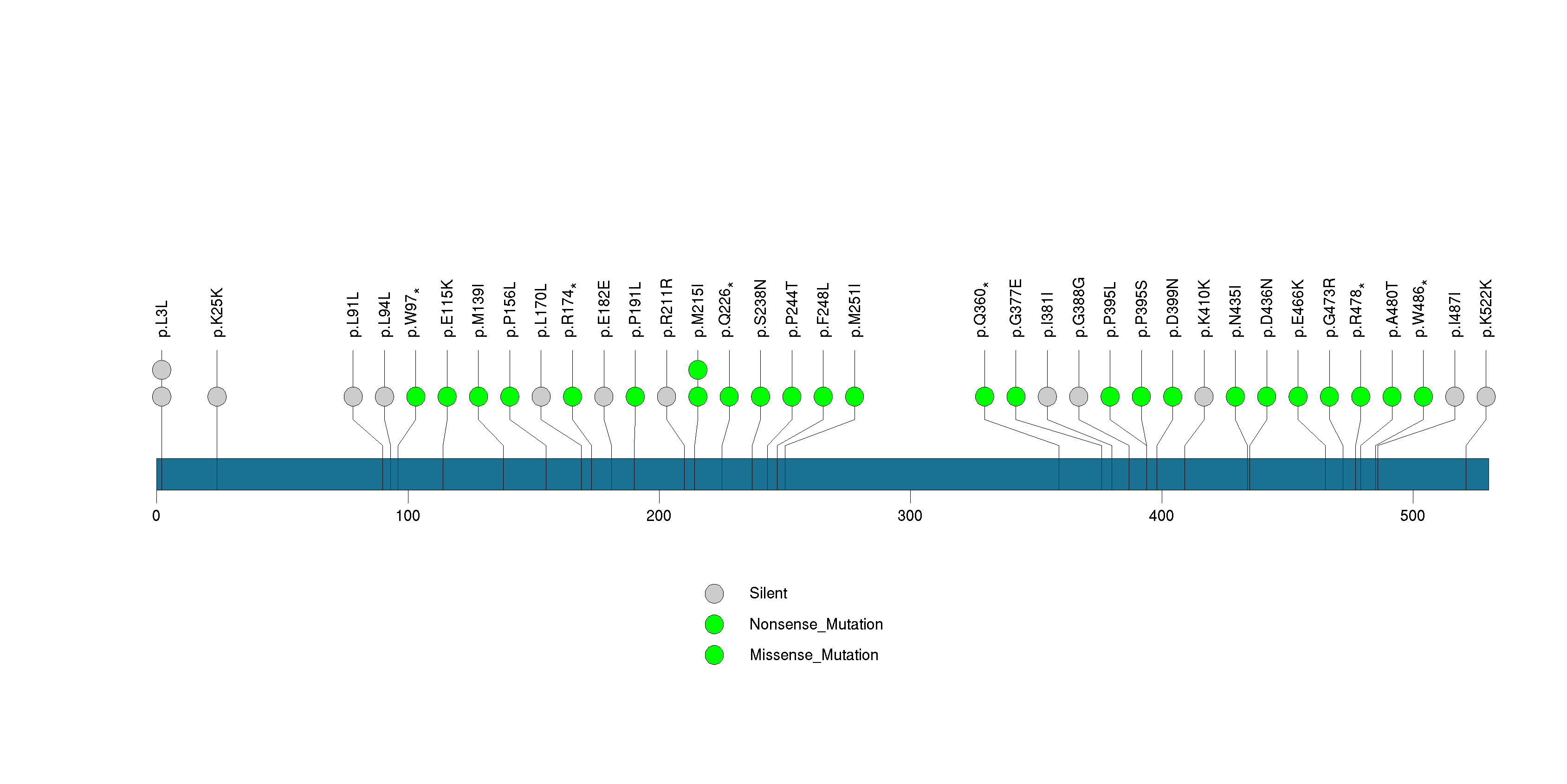
Figure S17. This figure depicts the distribution of mutations and mutation types across the TTN significant gene.

Figure S18. This figure depicts the distribution of mutations and mutation types across the THEMIS significant gene.
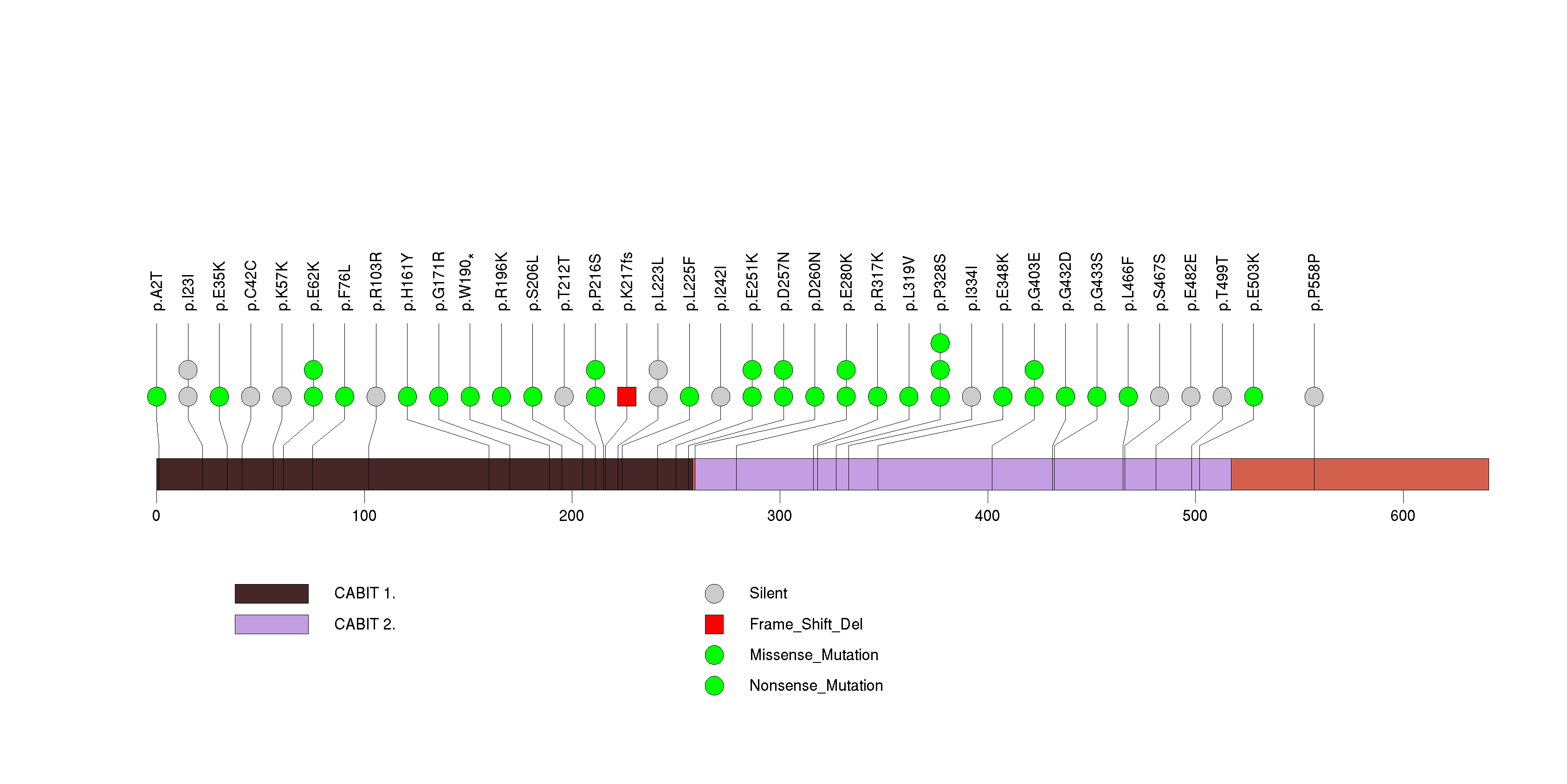
Figure S19. This figure depicts the distribution of mutations and mutation types across the LRTM1 significant gene.
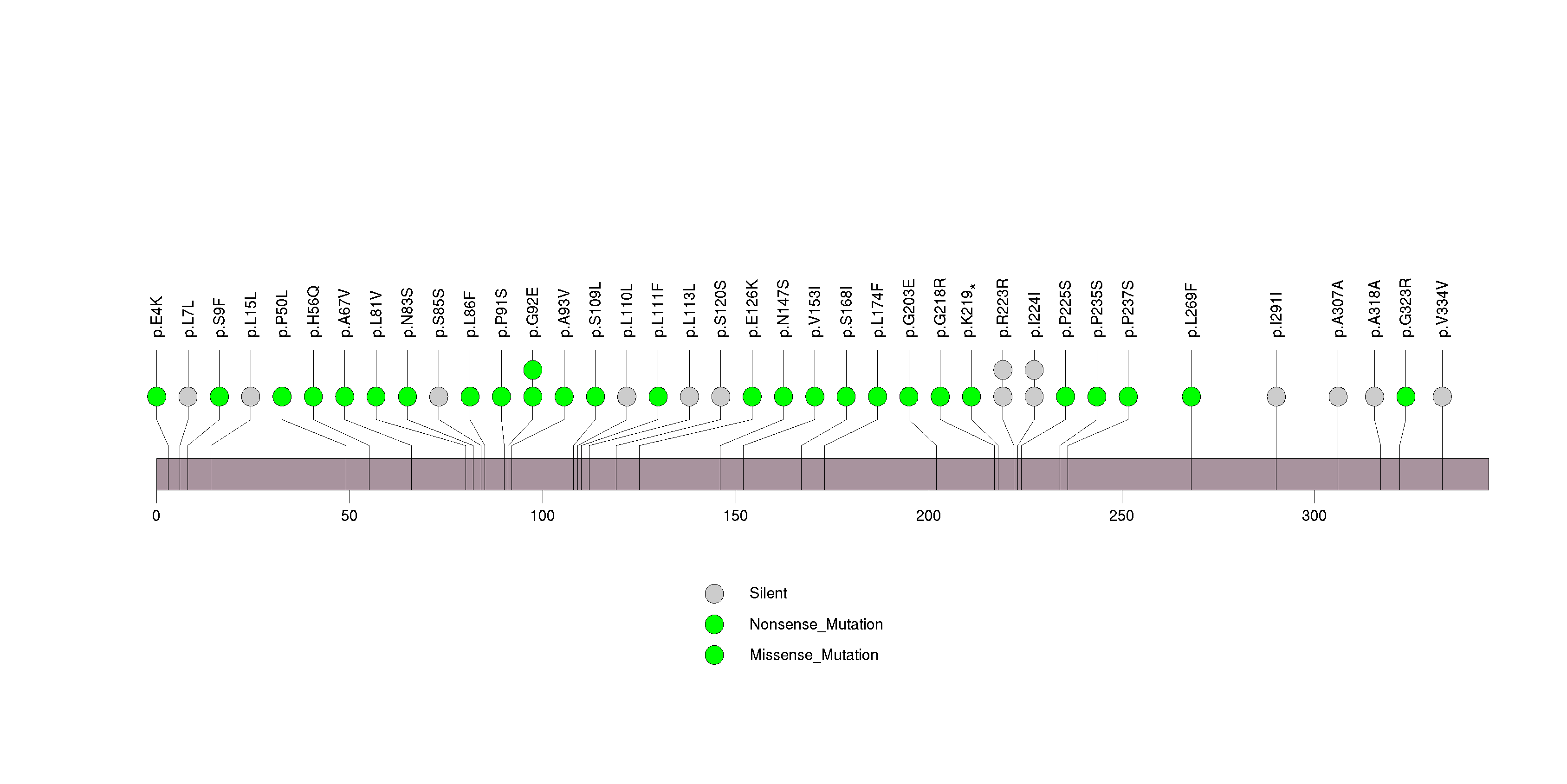
Figure S20. This figure depicts the distribution of mutations and mutation types across the TCEB3C significant gene.
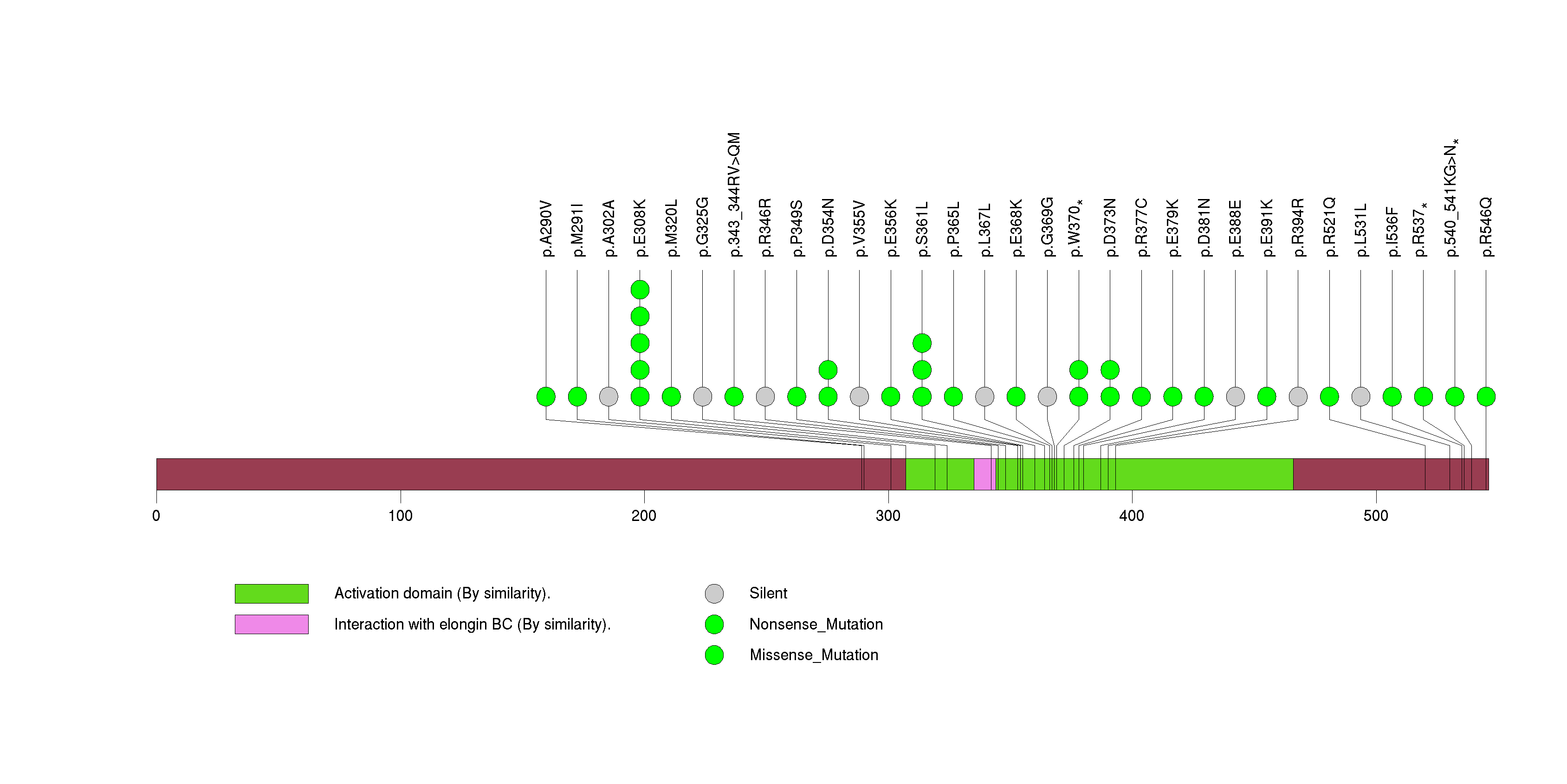
Figure S21. This figure depicts the distribution of mutations and mutation types across the ELF5 significant gene.
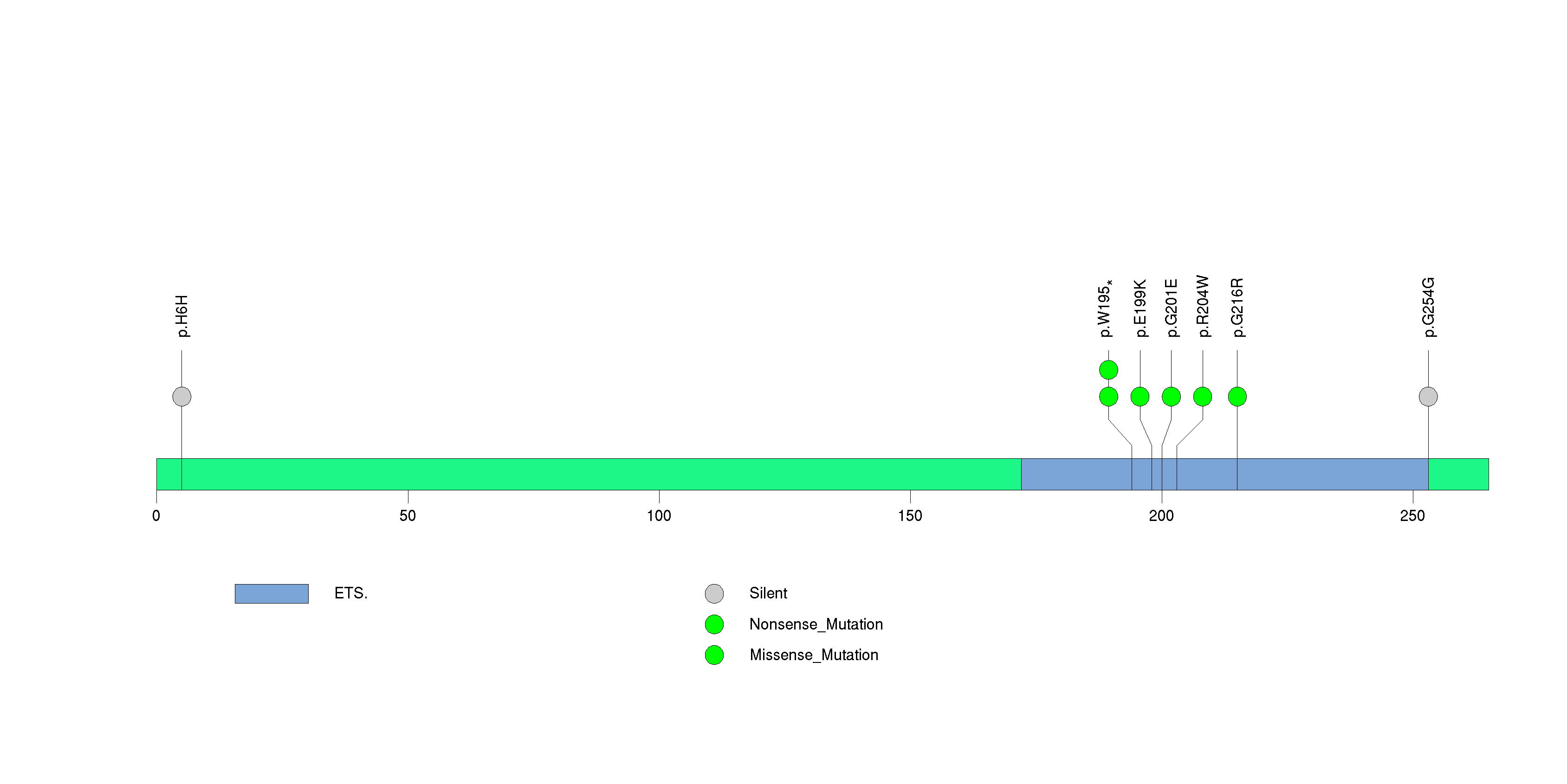
Figure S22. This figure depicts the distribution of mutations and mutation types across the GPR141 significant gene.
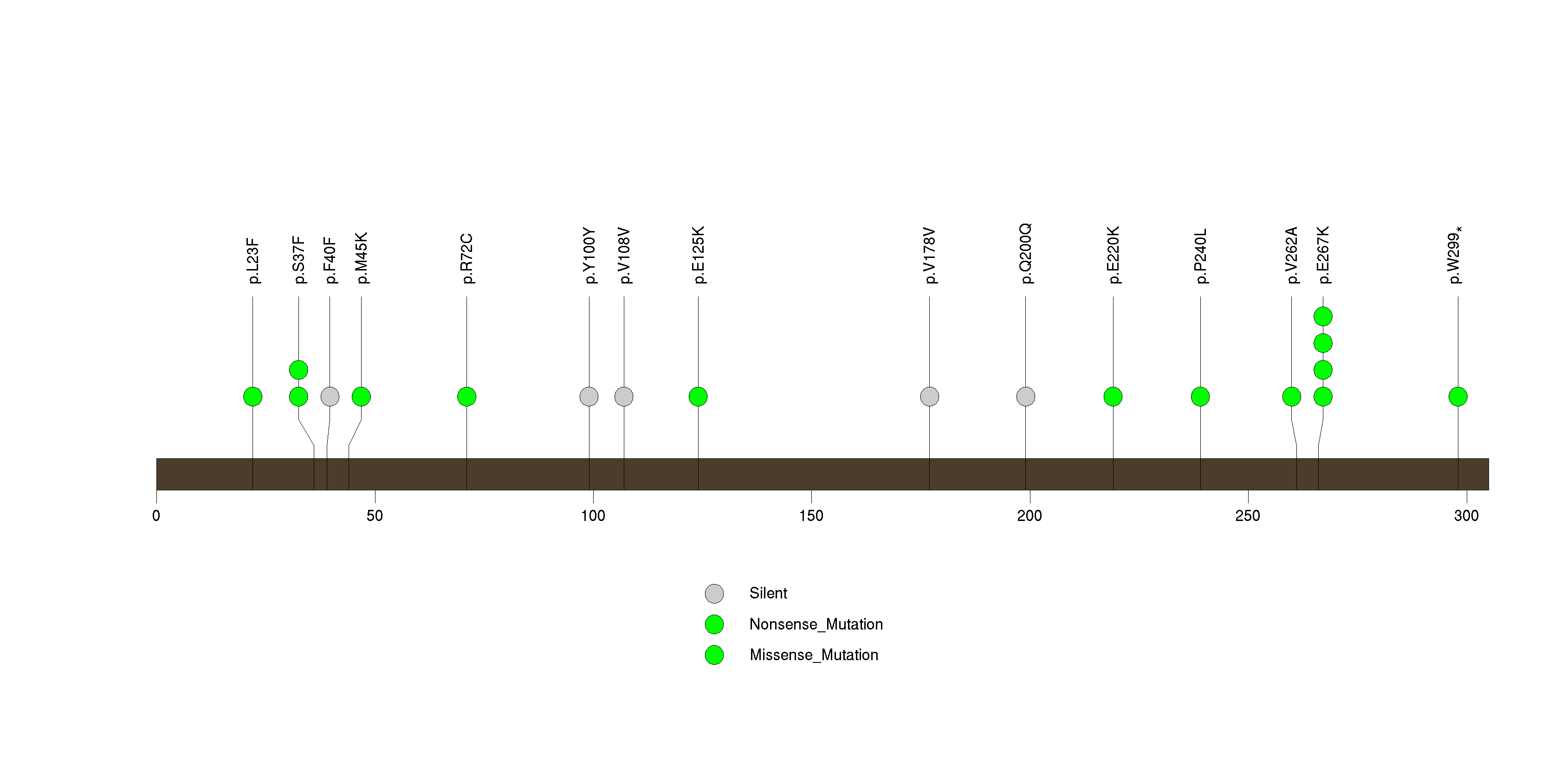
Figure S23. This figure depicts the distribution of mutations and mutation types across the NMNAT3 significant gene.
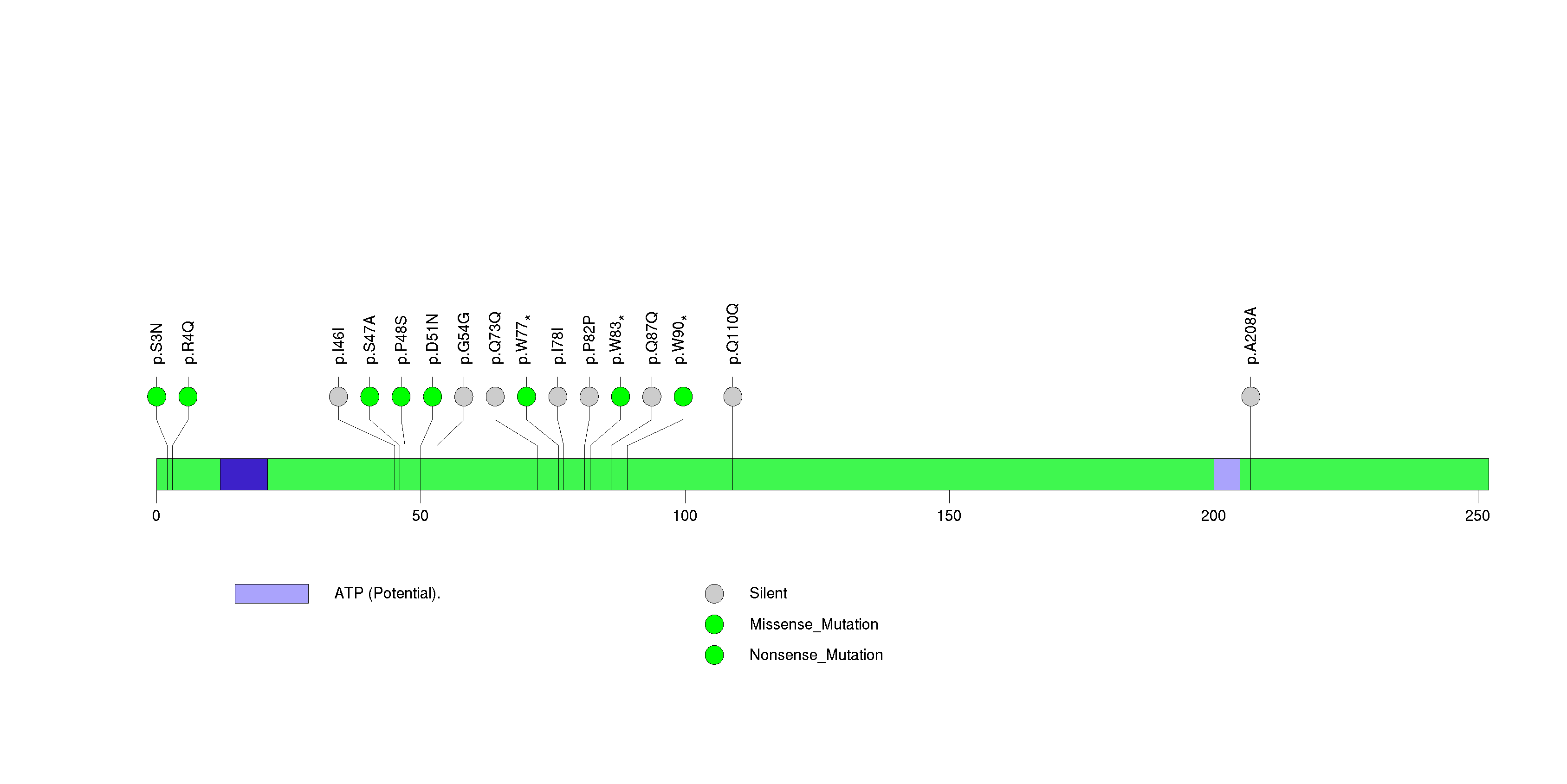
Figure S24. This figure depicts the distribution of mutations and mutation types across the EIF2B1 significant gene.
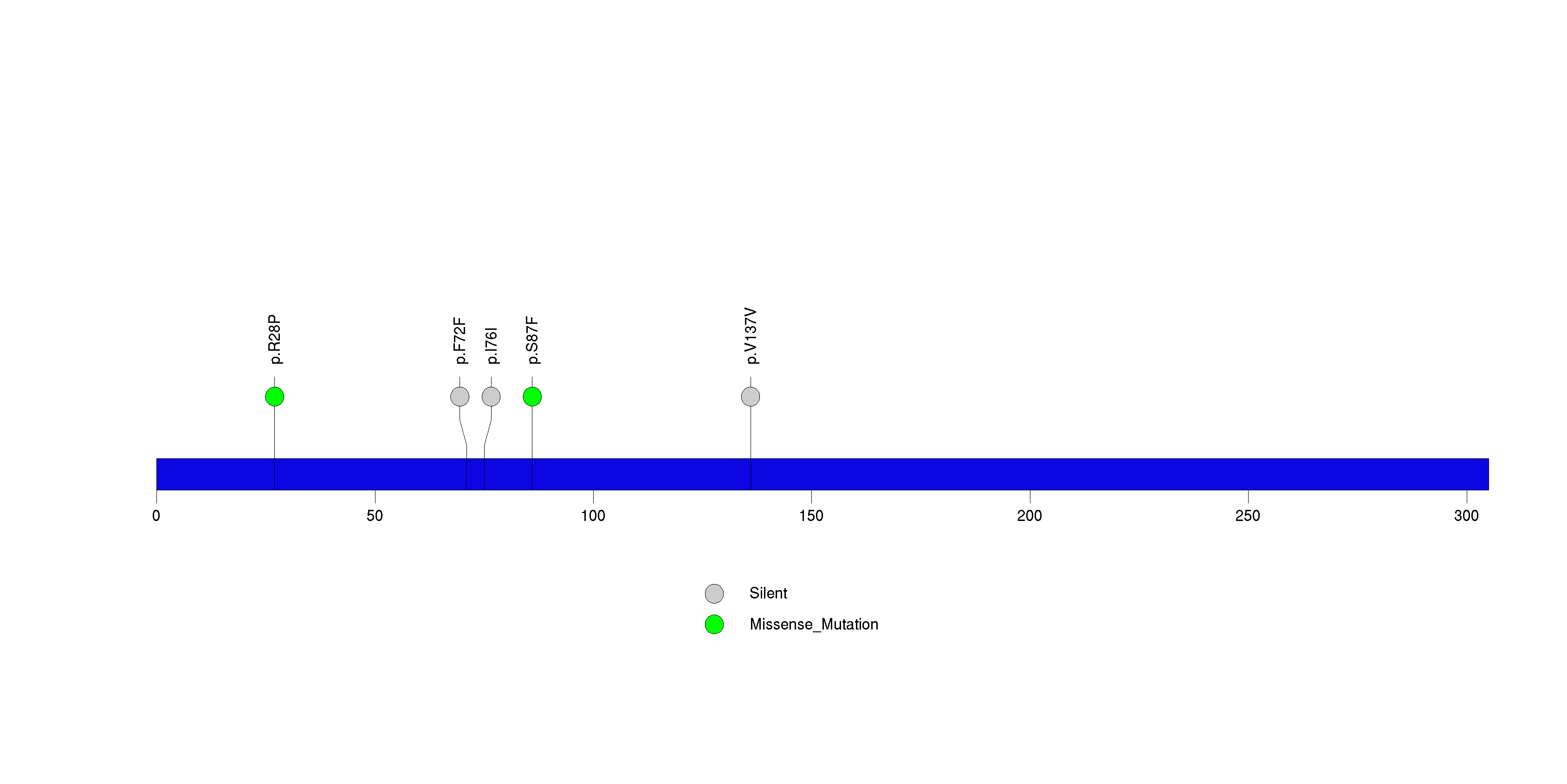
Figure S25. This figure depicts the distribution of mutations and mutation types across the CHGB significant gene.
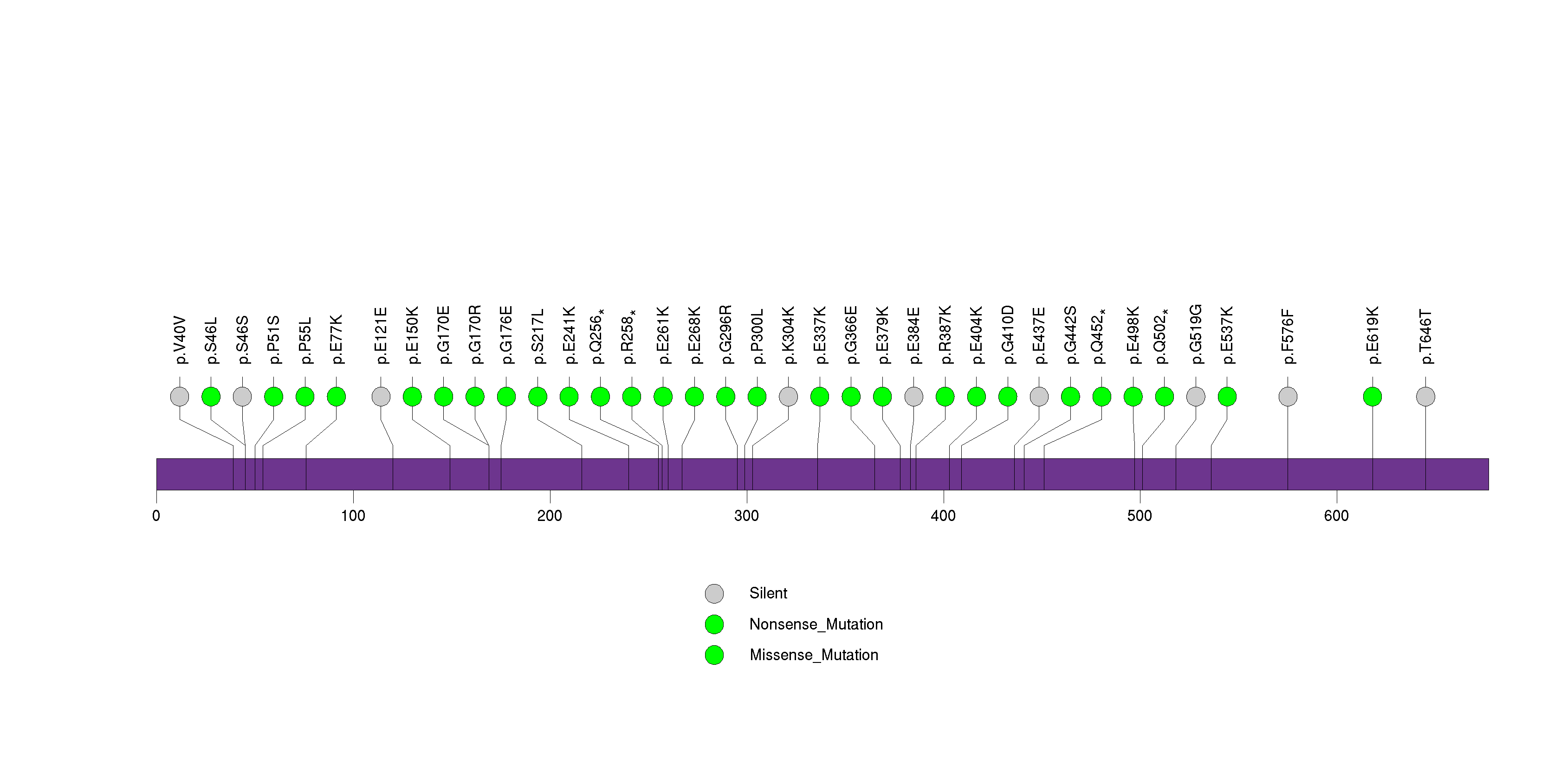
Figure S26. This figure depicts the distribution of mutations and mutation types across the COPG2 significant gene.
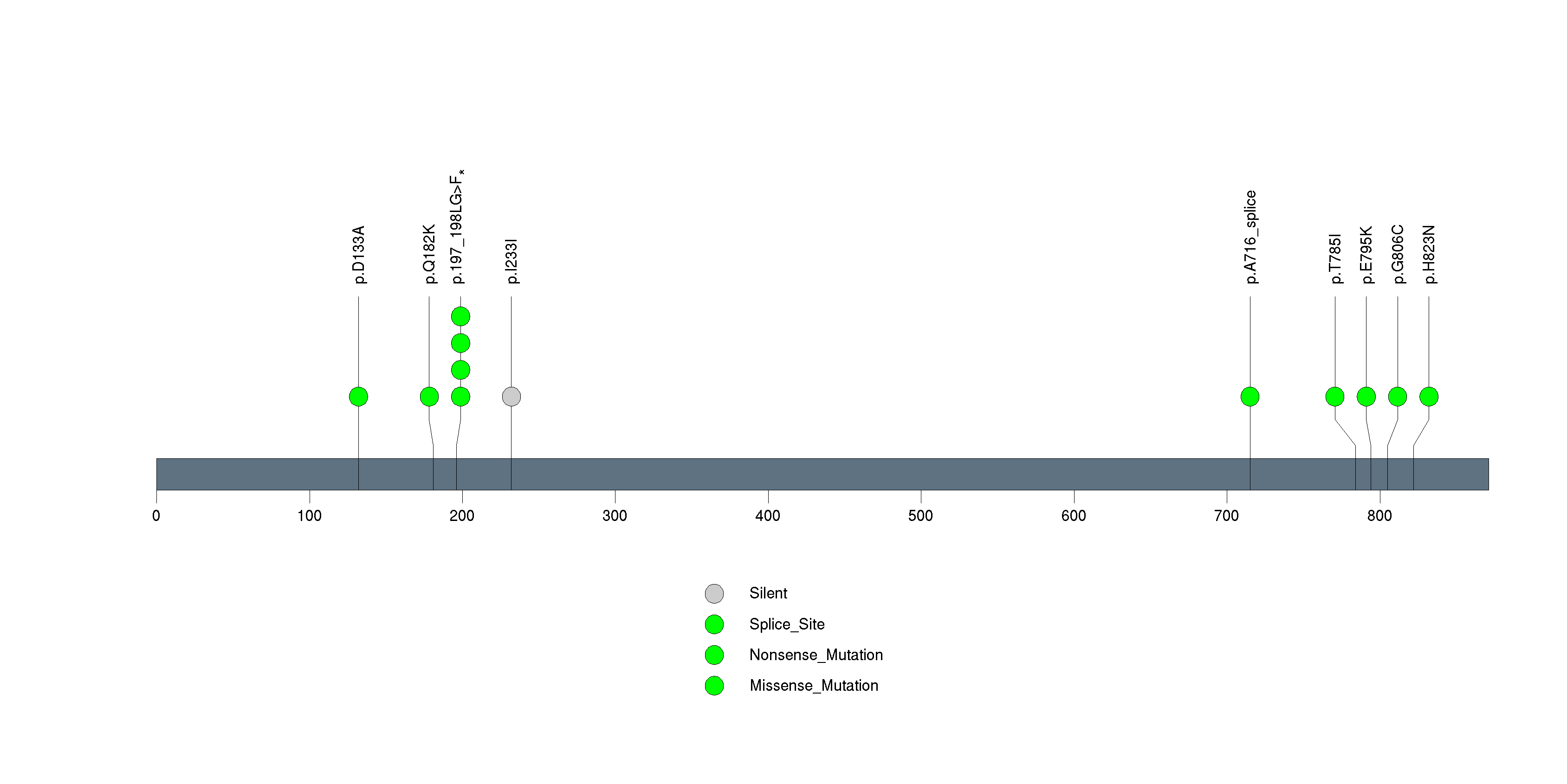
Figure S27. This figure depicts the distribution of mutations and mutation types across the RAPGEF5 significant gene.
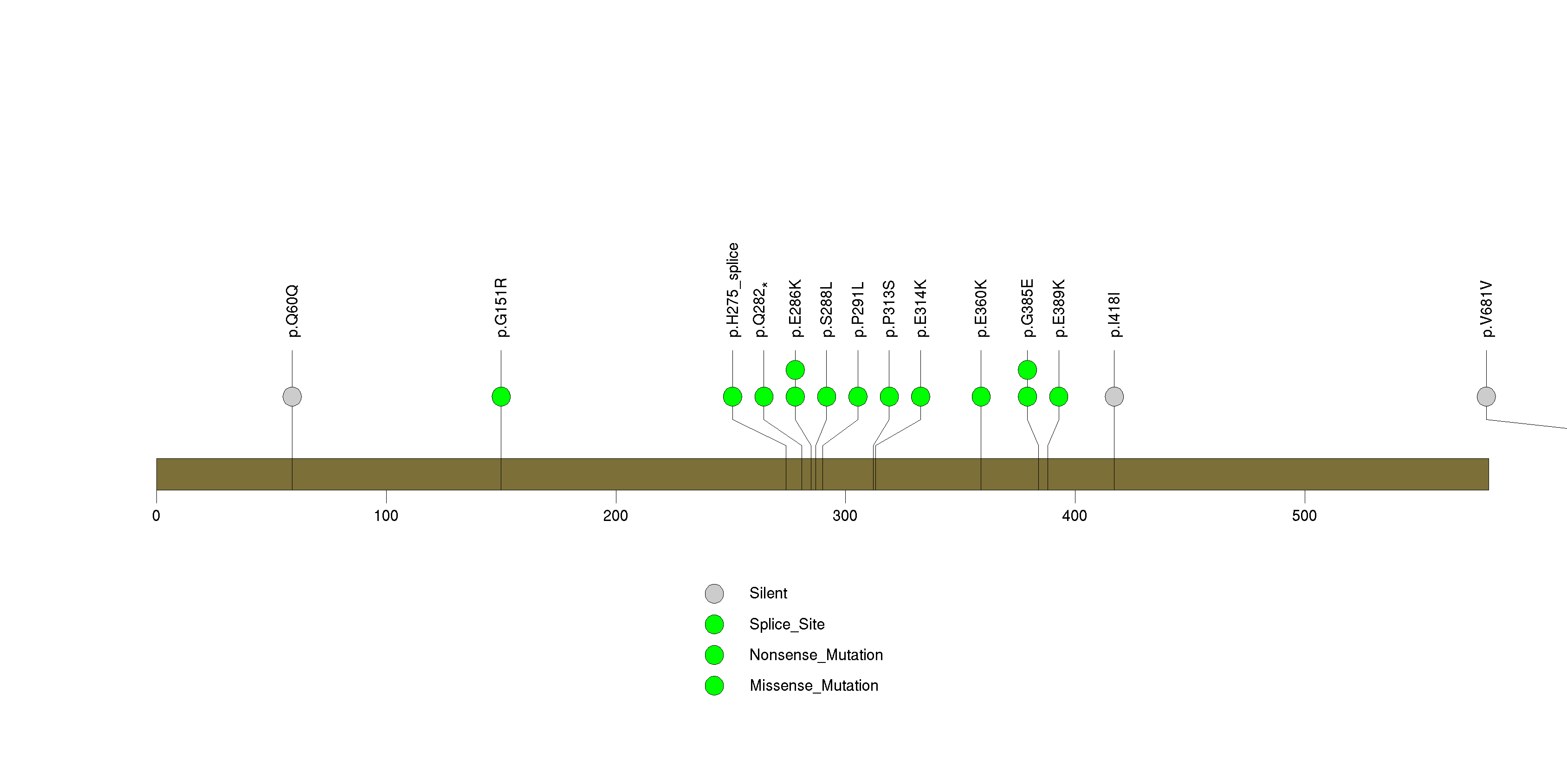
Figure S28. This figure depicts the distribution of mutations and mutation types across the MS4A2 significant gene.
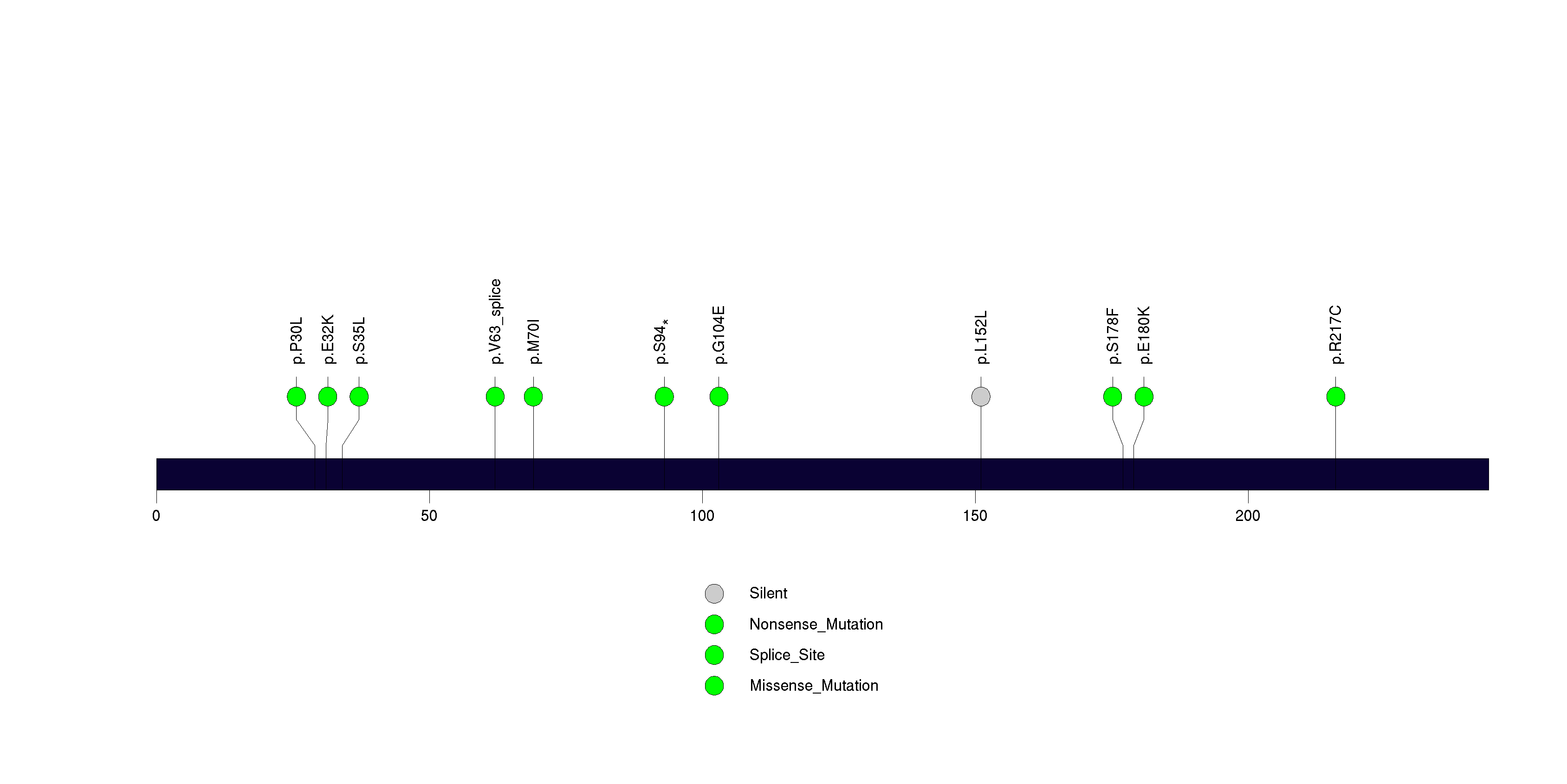
Figure S29. This figure depicts the distribution of mutations and mutation types across the MPP7 significant gene.
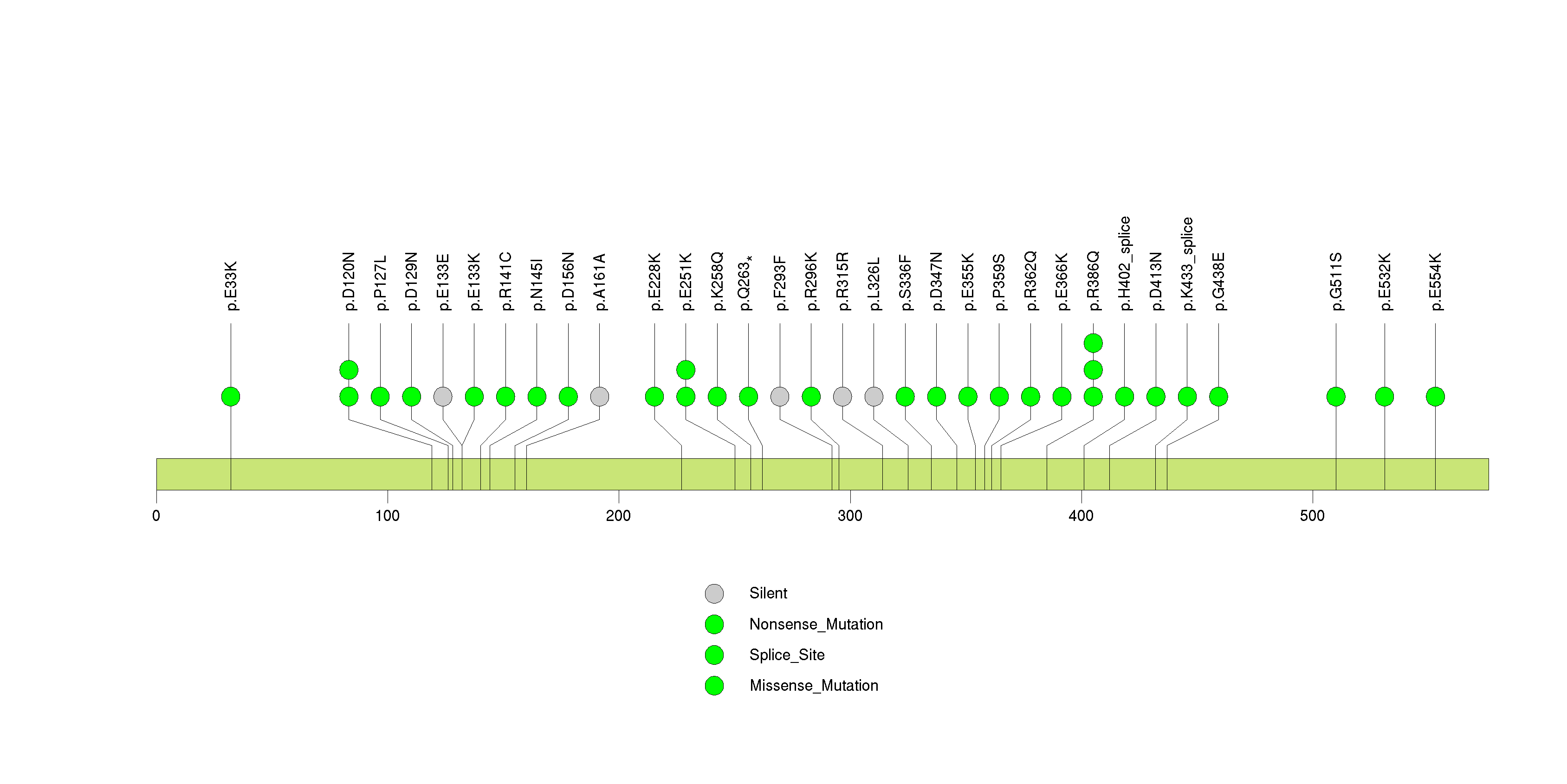
Figure S30. This figure depicts the distribution of mutations and mutation types across the C1QTNF9 significant gene.

Figure S31. This figure depicts the distribution of mutations and mutation types across the DNAH7 significant gene.

Figure S32. This figure depicts the distribution of mutations and mutation types across the FAM58A significant gene.
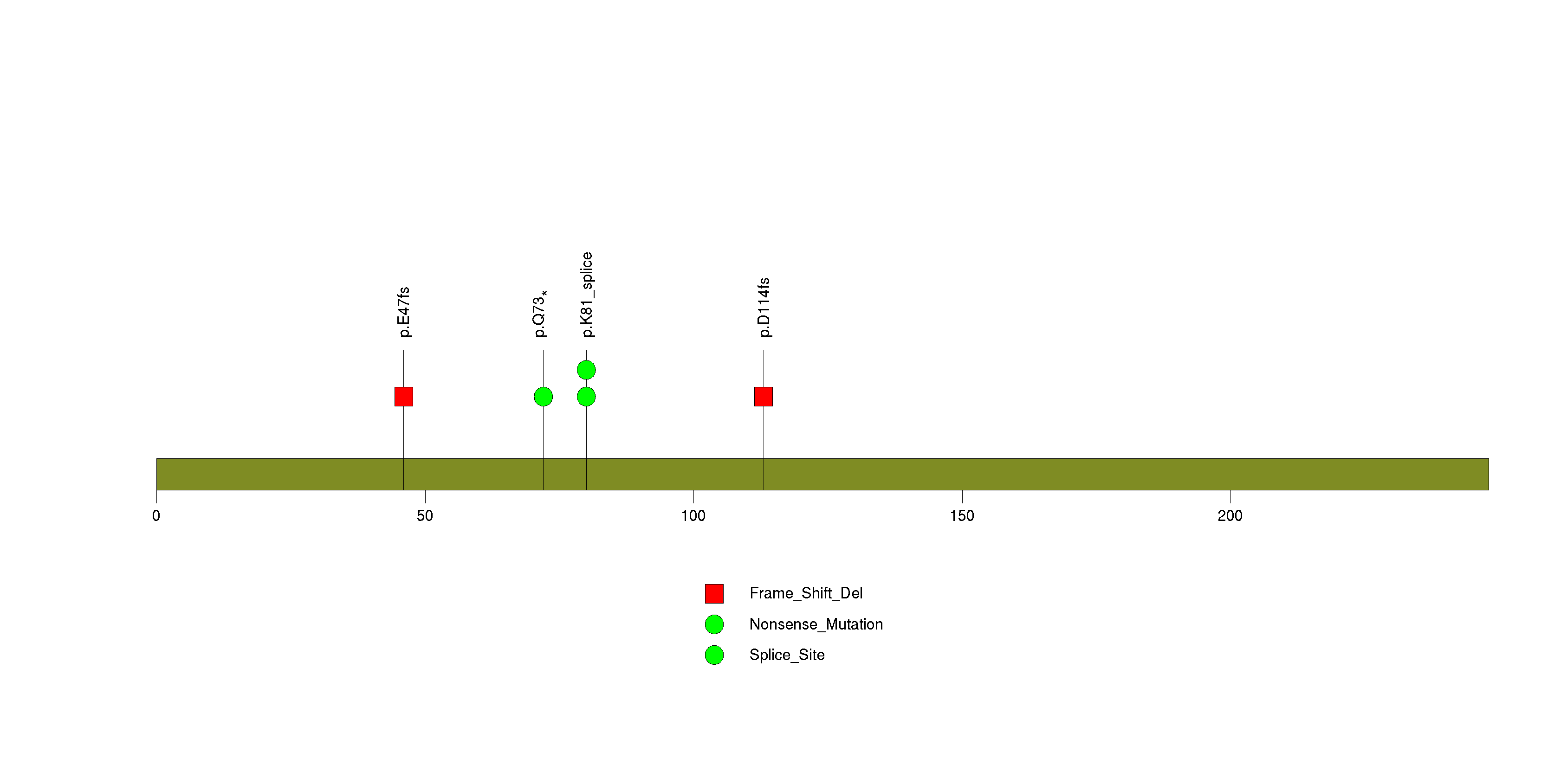
Figure S33. This figure depicts the distribution of mutations and mutation types across the LCE1B significant gene.

In this analysis, COSMIC is used as a filter to increase power by restricting the territory of each gene. Cosmic version: v48.
Table 4. Get Full Table Significantly mutated genes (COSMIC territory only). To access the database please go to: COSMIC. Number of significant genes found: 42. Number of genes displayed: 10
| rank | gene | description | n | cos | n_cos | N_cos | cos_ev | p | q |
|---|---|---|---|---|---|---|---|---|---|
| 1 | STK19 | serine/threonine kinase 19 | 13 | 2 | 6 | 456 | 12 | 0 | 0 |
| 2 | IDH1 | isocitrate dehydrogenase 1 (NADP+), soluble | 12 | 5 | 10 | 1140 | 14920 | 0 | 0 |
| 3 | NRAS | neuroblastoma RAS viral (v-ras) oncogene homolog | 67 | 33 | 65 | 7524 | 80983 | 0 | 0 |
| 4 | BRAF | v-raf murine sarcoma viral oncogene homolog B1 | 123 | 89 | 116 | 20292 | 1494071 | 0 | 0 |
| 5 | TP53 | tumor protein p53 | 39 | 356 | 37 | 81168 | 3489 | 0 | 0 |
| 6 | CDKN2A | cyclin-dependent kinase inhibitor 2A (melanoma, p16, inhibits CDK4) | 33 | 332 | 33 | 75696 | 1291 | 0 | 0 |
| 7 | EPHA6 | EPH receptor A6 | 60 | 8 | 5 | 1824 | 5 | 4.6e-10 | 3e-07 |
| 8 | EPHA7 | EPH receptor A7 | 42 | 13 | 5 | 2964 | 5 | 5.2e-09 | 2.9e-06 |
| 9 | PTEN | phosphatase and tensin homolog (mutated in multiple advanced cancers 1) | 18 | 767 | 18 | 174876 | 374 | 2.5e-08 | 0.000013 |
| 10 | NF1 | neurofibromin 1 (neurofibromatosis, von Recklinghausen disease, Watson disease) | 40 | 285 | 11 | 64980 | 25 | 1.1e-07 | 0.000048 |
Note:
n - number of (nonsilent) mutations in this gene across the individual set.
cos = number of unique mutated sites in this gene in COSMIC
n_cos = overlap between n and cos.
N_cos = number of individuals times cos.
cos_ev = total evidence: number of reports in COSMIC for mutations seen in this gene.
p = p-value for seeing the observed amount of overlap in this gene)
q = q-value, False Discovery Rate (Benjamini-Hochberg procedure)
Table 5. Get Full Table A Ranked List of Significantly Mutated Genesets. (Source: MSigDB GSEA Cannonical Pathway Set).Number of significant genesets found: 2. Number of genesets displayed: 10
| rank | geneset | description | genes | N_genes | mut_tally | N | n | npat | nsite | nsil | n1 | n2 | n3 | n4 | n5 | n6 | p_ns_s | p | q |
|---|---|---|---|---|---|---|---|---|---|---|---|---|---|---|---|---|---|---|---|
| 1 | SA_G1_AND_S_PHASES | Cdk2, 4, and 6 bind cyclin D in G1, while cdk2/cyclin E promotes the G1/S transition. | ARF1, ARF3, CCND1, CDK2, CDK4, CDKN1A, CDKN1B, CDKN2A, CFL1, E2F1, E2F2, MDM2, NXT1, PRB1, TP53 | 15 | CCND1(1), CDK4(5), CDKN1A(4), CDKN1B(1), CDKN2A(33), CFL1(1), E2F1(5), E2F2(4), MDM2(3), NXT1(2), PRB1(29), TP53(39) | 2837450 | 127 | 79 | 99 | 16 | 62 | 3 | 6 | 16 | 40 | 0 | 2.6e-09 | 4.2e-06 | 0.0026 |
| 2 | ST_G_ALPHA_S_PATHWAY | The G-alpha-s protein activates adenylyl cyclases, which catalyze cAMP formation. | ASAH1, BF, BFAR, BRAF, CAMP, CREB1, CREB3, CREB5, EPAC, GAS, GRF2, MAPK1, RAF1, SNX13, SRC, TERF2IP | 12 | BRAF(123), CAMP(1), CREB3(1), CREB5(9), MAPK1(4), RAF1(8), SNX13(1), SRC(1), TERF2IP(1) | 3751054 | 149 | 130 | 43 | 30 | 28 | 4 | 6 | 107 | 4 | 0 | 0.02 | 0.00013 | 0.04 |
| 3 | SA_REG_CASCADE_OF_CYCLIN_EXPR | Expression of cyclins regulates progression through the cell cycle by activating cyclin-dependent kinases. | CCNA1, CCNA2, CCND1, CCNE1, CCNE2, CDK2, CDK4, CDKN1B, CDKN2A, E2F1, E2F2, E2F4, PRB1 | 13 | CCNA1(13), CCND1(1), CCNE1(4), CCNE2(12), CDK4(5), CDKN1B(1), CDKN2A(33), E2F1(5), E2F2(4), E2F4(1), PRB1(29) | 3023744 | 108 | 76 | 82 | 17 | 61 | 0 | 4 | 18 | 25 | 0 | 2.7e-06 | 0.032 | 1 |
| 4 | HSA00472_D_ARGININE_AND_D_ORNITHINE_METABOLISM | Genes involved in D-arginine and D-ornithine metabolism | DAO | 1 | DAO(10) | 240807 | 10 | 10 | 10 | 2 | 7 | 1 | 1 | 1 | 0 | 0 | 0.12 | 0.11 | 1 |
| 5 | TERTPATHWAY | hTERC, the RNA subunit of telomerase, and hTERT, the catalytic protein subunit, are required for telomerase activity and are overexpressed in many cancers. | HDAC1, MAX, MYC, SP1, SP3, TP53, WT1, ZNF42 | 7 | HDAC1(1), MYC(5), SP1(5), SP3(1), TP53(39), WT1(5) | 2379389 | 56 | 44 | 50 | 8 | 26 | 2 | 7 | 6 | 15 | 0 | 0.00078 | 0.22 | 1 |
| 6 | HSA00627_1,4_DICHLOROBENZENE_DEGRADATION | Genes involved in 1,4-dichlorobenzene degradation | CMBL | 1 | CMBL(4) | 172740 | 4 | 4 | 4 | 1 | 4 | 0 | 0 | 0 | 0 | 0 | 0.48 | 0.46 | 1 |
| 7 | ARFPATHWAY | Cyclin-dependent kinase inhibitor 2A is a tumor suppressor that induces G1 arrest and can activate the p53 pathway, leading to G2/M arrest. | ABL1, CDKN2A, E2F1, MDM2, MYC, PIK3CA, PIK3R1, POLR1A, POLR1B, POLR1C, POLR1D, RAC1, RB1, TBX2, TP53, TWIST1 | 16 | ABL1(12), CDKN2A(33), E2F1(5), MDM2(3), MYC(5), PIK3CA(8), PIK3R1(3), POLR1A(11), POLR1B(8), POLR1C(1), RAC1(17), RB1(8), TBX2(6), TP53(39), TWIST1(1) | 6784714 | 160 | 96 | 126 | 24 | 84 | 8 | 6 | 16 | 43 | 3 | 9.2e-10 | 0.47 | 1 |
| 8 | FOSBPATHWAY | FOSB gene expression and drug abuse | CDK5, FOSB, GRIA2, JUND, PPP1R1B | 5 | CDK5(4), FOSB(5), GRIA2(34), JUND(1), PPP1R1B(2) | 1226014 | 46 | 39 | 43 | 15 | 28 | 3 | 2 | 6 | 7 | 0 | 0.069 | 0.82 | 1 |
| 9 | HSA00401_NOVOBIOCIN_BIOSYNTHESIS | Genes involved in novobiocin biosynthesis | GOT1, GOT2, TAT | 3 | GOT1(6), GOT2(5), TAT(17) | 883649 | 28 | 18 | 27 | 7 | 21 | 2 | 2 | 1 | 2 | 0 | 0.015 | 0.88 | 1 |
| 10 | SLRPPATHWAY | Small leucine-rich proteoglycans (SLRPs) interact with and reorganize collagen fibers in the extracellular matrix. | BGN, DCN, DSPG3, FMOD, KERA, LUM | 5 | BGN(6), DCN(17), FMOD(4), KERA(14), LUM(11) | 1178331 | 52 | 38 | 48 | 16 | 41 | 4 | 3 | 1 | 3 | 0 | 0.0018 | 0.88 | 1 |
In brief, we tabulate the number of mutations and the number of covered bases for each gene. The counts are broken down by mutation context category: four context categories that are discovered by MutSig, and one for indel and 'null' mutations, which include indels, nonsense mutations, splice-site mutations, and non-stop (read-through) mutations. For each gene, we calculate the probability of seeing the observed constellation of mutations, i.e. the product P1 x P2 x ... x Pm, or a more extreme one, given the background mutation rates calculated across the dataset. [1]
This is an experimental feature. The full results of the analysis summarized in this report can be downloaded from the TCGA Data Coordination Center.